Inbox and environment news: Issue 458
July 19 - 25, 2020: Issue 458
North Avalon Beach Headland Changes Again: Storm Swell July 2020
The low-pressure system sent powerful surf onto the coastlines, arriving on Tuesday, and has been the cause of the Bureau of Meteorology issuing Hazardous Surf Warning all week. By Saturday the unrideable waves became smoother, causing experienced surfers to find and ride the swell as the waves hollowed out on some beaches.
More photos from along our stretch of beaches in this week's Pictorial.
Mona Vale Photography Competition
Blue Cinema Ep 1: SURFACE
Guide to the classics: The War of the Worlds

Spoiler alert: this story details how The War of the Worlds ends.
The latest screen adaption of H. G. Wells’ 1898 modern masterwork The War of the Worlds will hit our screens this week. Continuously in print since its first publication, the book is a literary gift that keeps on giving for producers and screenwriters. They recognise the story’s unerring capacity to find its mark with each generation.
Wells – who also wrote The Time Machine (1895) and The Invisible Man (1897) – helped pioneer the science fiction genre when he conceived this astonishing book. With an eyewitness narration that reads grippingly still, it tells of a Martian invasion of Earth.
Shock And Awe
Set in London, Wells depicts a complacent world; of men “serene in their assurance” of their dominion over the planet. But humans get the shock of another reality when suddenly visited upon by blood-feeding and squid-like creatures possessed of “intellects vast and cool” that are “unsympathetic” to Earthlings whose planet they had long “regarded with envious eyes”.
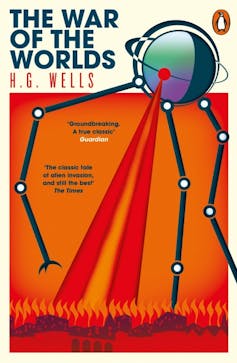
An advance party arrives inside metal cylinders shot from giant cannons stationed on Mars. From the cylinders come dozens of Martians, each operating a three-legged metal “fighting-machine” that attacks London’s helpless population by means of a “heat ray”. From these “whatever is combustible flashes into flame”, metal liquifies, glass melts and water “explodes into steam”.
Fleeing like rats from a burning ship, panic spreads like a contagion. The narrator describes a breakdown of law and order, and undergoes something of a breakdown himself.
Upper-class women arm themselves as they cross the country, because traditional deference has gone up in smoke. The “social body” of organisation – police, army, government – suffers “swift liquefaction”.
The Martians, however, had become too intelligent for their own good. They had made the Red Planet disease-free but forgotten about germ theory. And so while laying waste to London, they inhale a bug; a simple bacteria “against which their systems were unprepared” and so suffered a “death that must have seemed to them as incomprehensible as any death could be”.
London will rise again. The world has been spared. Humanity gets lucky — this time.
Read more: Science fiction helps us deal with science fact: a lesson from Terminator's killer robots
A Wider War
In the new Anglo-French television series, La Guerre Des Mondes, the action takes place in both London and France. Martian devastation is given wider latitude.
Why does this now-familiar story have such a hold on successive generations? Iterations include the Orson Welles’ radio broadcast of “fake news” bulletins about Martian invasion, to the 1978 contemporary music version with Richard Burton narration, to Steven Spielberg’s film blockbuster starring Tom Cruise. Last year also saw a BBC production set in Edwardian London.
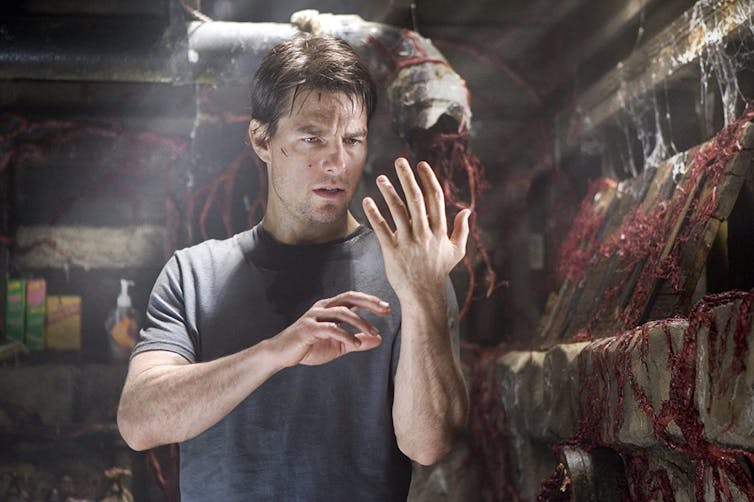
One response is to consider our attraction to sci-fi. It sees the laws of science upended. Technology seems to make anything possible and to minds already accustomed to real technological transformation, sci-fi literature brings the now-thinkable future into the present.
But there’re less obvious elements to think about: themes that were important in 1898 and resonate still.
Invasion And Imperialism
Wells’ book touched something existentially British during their Pax Britannica period of relative peace. Across the Channel, Europe seethed with diplomatic intrigue and tensions culminating in the first world war.
The new sci-fi genre connected to an older “invasion literature” genre; a long-standing British apprehension of the Continent, especially its renascent German threat. Wells hints at this when he writes that the arrival of the cylinders (before the Martians emerged from them) “did not [initially] make the sensation that an ultimatum to Germany would have done”.
Then there’s the imperialism angle. Was Wells tapping a source of late-Victorian shame at the true source of British wealth and power? Then, a quarter of the world map was coloured British Empire pink. London was the epicentre of modern imperialism — the coordination point for the suffering of millions and the plunder of their lands.
Moreover, Belgium, Germany, France, and also the USA, were engaged in the “scramble for colonies” in Africa and Asia. Under the veneer of sci-fi, Wells describes what it’s like to be a people facing a powerful invader.
Fear Is The Contagion
A very different perspective says something about our species and our idealised self-conception. In 1908 the Russian novelist and revolutionary Alexander Bogdanov, drew on WOTW for inspiration. In his novel Red Star protagonist Leonid travels to Mars to learn about communism from Martians who had made their own revolution and now lived in peace. Leonid despairs of the congenitally “unstable and fragile” nature of human relationships and looks to another planet for guidance.
The Earth-bound communist project of the 20th century ended badly, to say the least. But our human vulnerability to invasion, to tyranny, to economic catastrophe, and even to the bacteriological danger from microbes resistant to antibiotics, continues to haunt us.
The latest adaptation is set in our time with smartphones and the internet. Here again our 21st-century complacency is shattered, and our vulnerability laid bare.
Fear is a contagion in WOTW, and its Londoners show little heroism in the face of an alien invader.
Read more: Science fiction builds mental resiliency in young readers
A New Battle
Bacteria did in Wells’ Martians and might do for us too – unless drugs to overcome resistance are developed. Through sci-fi, we can explore our fear of the invisible foe.
Global warming might be our other enemy – the red skies of Australia’s last bushfire season fresh in our memory and reminiscent of Well’s novel.
The narrative provides a hugely enjoyable fantasy. But we need to think about what science fiction might be doing to our relationship with science fact, especially if we consume it as a tranquilliser to displace and sublimate our fears of invisible threats.
If we do, then the incomprehensibility felt by Wells’ Martians may add that little bit more to our discord regarding the sources and solutions to global warming. Humans got lucky in The War of the Worlds. They didn’t need to do anything to survive. We can’t count on luck to save us or our planet.
War of the Worlds double episode will premiere July 9 on SBS and continue weekly from July 16. Episodes will be available on SBS On Demand on the same day as broadcast.![]()
Robert Hassan, Professor, School of Culture and Communication, University of Melbourne
This article is republished from The Conversation under a Creative Commons license. Read the original article.
A rare discovery: we found the sugar glider is actually three species, but one is disappearing fast
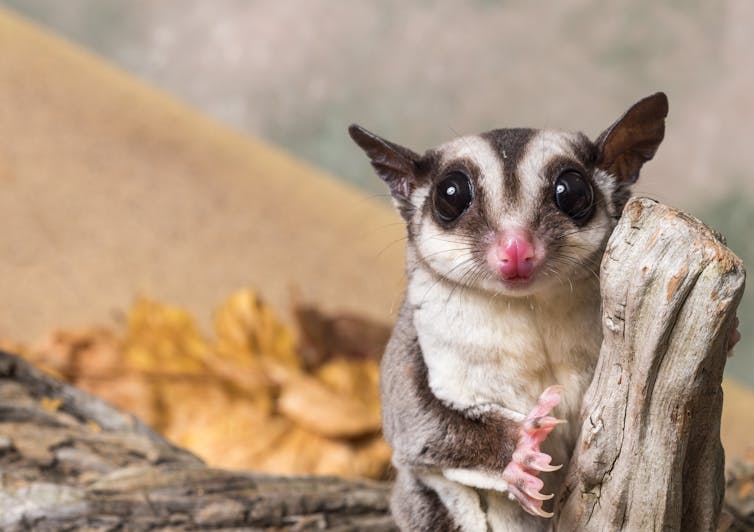
Most Australians are familiar with the cute, nectar-loving sugar glider (Petaurus breviceps), a marsupial denizen of forests in eastern and northern Australia.
However, our new study shows the sugar glider is actually three genetically and physically distinct species: Petaurus breviceps and two new species, Krefft’s glider (Petaurus notatus) and the savanna glider (Petaurus ariel).
This discovery has meant the distribution of the sugar glider has substantially reduced, and it’s now limited only to coastal regions in southeastern Australia. The devastating bushfires last summer hit this part of Australia hard.
Read more: Summer bushfires: how are the plant and animal survivors 6 months on? We mapped their recovery
Our new species from northern Australia, the savanna glider, is particularly at risk, living in a region that’s suffering ongoing small mammal declines. We must urgently assess the conservation status of both the sugar glider and savanna glider before they’re lost.

Nature’s BASE-Jumpers
Our discovery of new Australian mammal species is rare and exciting. That’s because while Australia is filled with hidden and undiscovered animal and plant diversity, our mammal fauna is considered relatively well known, with more than 99% of all species scientifically described.
Perhaps Australia’s most graceful mammals, species of the genus Petaurus (meaning “rope-dancer”) have the unique ability to expand the skin between wrist and ankle to glide from tree to tree – they are nature’s BASE-jumpers. It’s believed these gliding capabilities evolved as a way to adapt to the open forests of Australia.
The palm-sized sugar glider, named after its insatiable appetite for all things sweet, is the most widely known member of the genus and is commonly kept and bred in captivity around the world.
From The Aussie Outback To London’s Natural History Museum
An investigation into sugar glider genetics a decade ago highlighted two divergent groups within the species, suggesting sugar gliders may represent more than one species.
In that study, scientists also unexpectedly found that one glider from Melville Island in the Northern Territory was genetically distinct from sugar gliders. Instead, this Melville Island glider showed a close relationship with two larger existing species, the squirrel glider (Petaurus norfolcensis) and mahogany glider (Petaurus gracilis).
Prompted by this unusual finding, we investigated the mysterious glider’s identity.

From some of the most remote areas of outback Australia to our vast national museum collections, and ultimately the hallowed halls of London’s Natural History Museum, we captured, measured and compared every glider we could find to evaluate their relationships.
Indigenous knowledge of the savanna glider Petaurus ariel and the contributions of local Aboriginal people were also invaluable to our investigation.
The savanna glider is culturally significant and valued across multiple language groups in northern Australia and we are grateful to the Traditional Owners for sharing their knowledge of the species and its habitat.
In the end, we assessed more than 300 live and preserved specimens and established three species where once there was one.
Meet The New Gliders
The savanna glider lives in the woodland savannas of northern Australia and looks a bit like a squirrel glider with a more pointed nose, but much smaller. The remaining two species look similar to each other and may overlap in some areas of southeastern Australia.
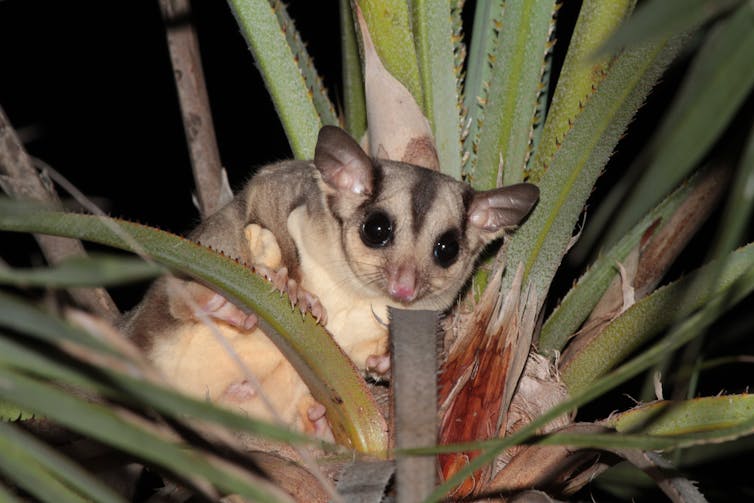
Krefft’s glider has a clearly defined dorsal stripe and fluffy tail. It is widespread in eastern Australia and has been introduced to Tasmania.
The sugar glider, with a less-defined dorsal stripe, is apparently restricted to forests east of the Great Dividing Range, extending from southeast Queensland to around the border of New South Wales and Victoria.
What Does This Mean For Sugar Gliders?
Despite ongoing debate about the role of taxonomy (the science of classifying species) in conservation, it is clear from our work that species definitions provide an essential foundation for effective conservation.
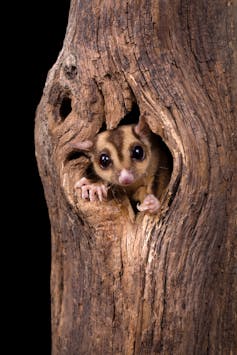
When considered as one species, sugar gliders were widespread, abundant and officially classified as “least concern”.
The distinction of these three species has resulted in a substantially smaller distribution for the sugar glider, making the species vulnerable to large scale habitat destruction, such as the recent bushfires.
And sadly, the bushfires have incinerated a large proportion of the sugar glider’s updated range. Given they are tree hollow users and require a diverse habitat with a variety of foods, the bushfires have most likely had a devastating effect on this much-loved species.
The Savanna Glider Is Disappearing
Our work has shown urgent intervention is needed to save this important plant pollinator and icon of the Australian bush.
The savanna glider in particular is facing its own conservation concerns in the ongoing northern Australian small mammal declines. Tree-dwelling mammals are among those worst affected there, and it appears the savanna glider is no exception.
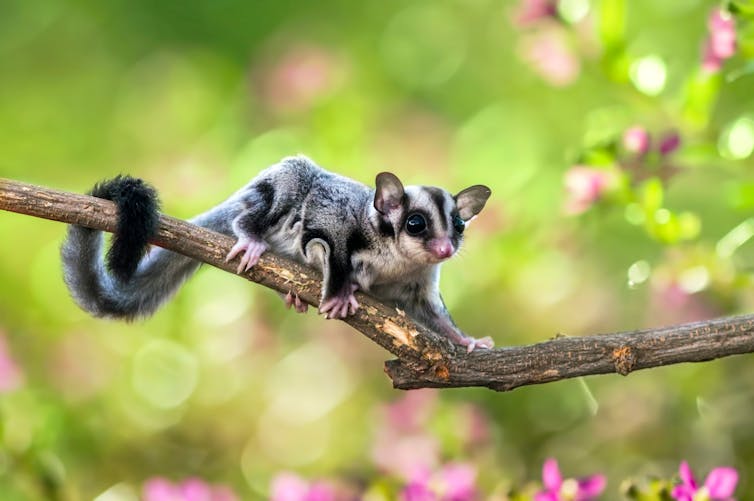
An earlier study of ours showed the species has undergone a 35% range reduction over the last 30 years, and is slowly disappearing from the inland areas it once inhabited. It’s likely feral cats, changed fire regimes and feral herbivores have played a significant role in the savanna glider’s vanishing range.
It would be a tragedy if this species is lost to the world just as it was discovered, especially with Australia’s appalling track record of human-induced mammal extinctions.
Read more: Scientists and national park managers are failing northern Australia’s vanishing mammals
More scientific work is urgently needed. We must define the distinct ecology of each species and determine their distribution in more detail.
This will enable us to effectively assess the conservation status of each species and determine what management efforts are required to ensure their protection as they face an uncertain future.![]()
Teigan Cremona, Research Associate, Charles Darwin University; Alyson Stobo-Wilson, Postdoctoral Research Associate, Charles Darwin University; Andrew Baker, Senior Lecturer, Queensland University of Technology; Steve Cooper, Principal Researcher , South Australian Museum, and Sue Carthew, Provost and Vice President, Charles Darwin University
This article is republished from The Conversation under a Creative Commons license. Read the original article.
1 in 5 PhD students could drop out. Here are some tips for how to keep going

Doctoral students show high levels of stress in comparison to other students, and ongoing uncertainty in terms of graduate career outcomes can make matters worse.
Before the pandemic, one in five research students were expected to disengage from their PhD. Disengagement includes taking extended leave, suspending their studies or dropping out entirely.
COVID-19 has made those statistics far worse. In a recent study, 45% of PhD students surveyed reported they expected to be disengaged from their research within six months, due to the financial effects of the pandemic.
Many factors influence whether a student completes their doctorate. They include supervision support (intellectual and pastoral), peer support (colleagues, friends and family), financial stability and good mental health.
In our recently published book The Doctoral Experience Student Stories from the Creative Arts and Humanities – which we edited with contributions from PhD students – students outlined their experiences of doing a doctorate and shared some useful strategies for how to keep going, and ultimately succeed, in the doctoral journey.

A Deeply Personal Journey
Completing a doctorate involves much more than generating knowledge in a specific discipline. It is a profoundly transformational process evolving over a period of at least four years — and often longer.
This entails personal questioning, development in many areas of life, and often a quite significant personal and intellectual reorientation. The PhD brings with it high expectations, which in turn creates high emotional stakes that can both inspire and derail students. This is coupled with coming to see and think about the world very differently — which for some can be a daunting prospect, as all previously held assumptions are thrown into disarray.
Such a profoundly existential process can itself engender anxiety, depression and trauma if students are not equipped with the self-care strategies that enable resilience.
Read more: PhD completion: an evidence-based guide for students, supervisors and universities
Every chapter in our book, written by a different student, emphasises the need to engage in deep thinking and planning regarding their personal goals, strengths and weaknesses, and ways of working before starting the PhD.
This is important preparatory work to ensure any challenges that arise are surmountable.
In her chapter, Making Time (and Space) for the Journey, AK Milroy writes she learnt to
[…] analyse and break down the complicated doctoral journey into a manageable, achievable process with clear tasks and an imaginable destination.
She writes this includes involving family and friends in the process because
[…] it is paramount to ensure these people understand the work that lies ahead, and also that they too are being respected by being included in the planning.
Relationships were, above all, a critical component of the experience for many of the student writers. The supervisory relationship is the most obvious one, which Margaret Cook describes as the student undertaking a form of academic apprenticeship.
Read more: Ten types of PhD supervisor relationships – which is yours?
The student authors also identify strategies for the “thinking” part of the research process once enrolled. These include acknowledging that the free and creative element of mind-wandering and downtime are as legitimate as the focused, task-oriented work of project management, such as preparing checklists and calendars.
AK Milroy calls these “strategic side-steps”.
Peter Mackenzie, who researched regional jazz musicians, went a step further to connect with his participants.
I felt like an outsider but once I started to play with the guys on the bandstand that night at the Casino, I sensed a different level of appreciation from them. After playing and taking on some improvisations, I could feel the group relax. I was no longer an outside musician. Even better, I wasn’t seen as an academic. I was one of them.
Struggling With Self Doubt
The task of writing, of course, cannot be ignored in the long doctoral journey.
Drafting and redrafting, jettisoning ideas and arguments along the way, is acknowledged as a core component of the doctoral learning process itself, and the many attempts are not proof of failure.

Gail Pittaway writes about extending networks beyond one’s supervisors and university to collaborate with those in the discipline nationally and internationally.
This can be productive and lead to co-written articles and editing special issues of journals, which can positively influence the PhD thesis.
[…] by developing confidence in sharing ideas, seeking peer review feedback and editorial advice from a wider range of readers as some of these sections are submitted for publication, the writing of the thesis is encouraged and energised.
Many of the student authors acknowledge questioning, self-doubt and fear of the unknown are central to creating and performing research. While this might be frightening, they say it should be embraced as this is where innovation and novelty can arise.
Charmaine O'Brien writes about how transformative learning is dependent on this period of complexity and not-knowing. While “failure to make experience conform to what we already know is threatening because it destabilises a sense of how we know the world, and ourselves in it, resulting in psychological ‘dis-ease’”, staying with it – and having supportive supervisors – ensures the student becomes a doctoral-level thinker.
Read more: Mindfulness can help PhD students shift from surviving to thriving
Lisa Brummel writes of extending requirements of occupational health and safety into her own life. This takes forms such as family, friends and exercise, assisting with work-life balance and good mental health.
After all, two of the most significant resources PhD students possess to do the work required are their physical and mental capacity.
Finally, students must love their topic. Without an innate fascination for the field in which they are researching, this often tumultuous intellectual, emotional and personal journey may derail.
In the four-plus years spent doing a doctoral degree, any range of major life events can occur. Births, deaths, marriages, separations and divorces, illnesses and recovery, are all possible. Being willing to seek help and knowing who to ask can be the difference between completing and collapsing.
There is no pleasure without pain in the doctoral journey, but with the right frame of mind and supportive supervisors, the joys certainly outweigh the suffering.![]()
Craig Batty, Professor of Creative Writing, University of Technology Sydney; Alison Owens, Senior Lecturer, Learning and Teaching Centre, Australian Catholic University; Donna Lee Brien, Professor, Creative Industries, CQUniversity Australia, and Elizabeth Ellison, Senior Lecturer, Creative Industries, CQUniversity Australia
This article is republished from The Conversation under a Creative Commons license. Read the original article.
Gang-Gang Cockatoos – Capertee Valley
Stay Healthy During The HSC
In any ‘normal’ year the HSC requires dedication and focus as well as the support of friends and family.
This year hasn’t exactly panned out to be a ‘normal’ year, with announcements about changes to the HSC due to COVID-19.
Despite all the goings-on, students across NSW are continuing to study for their HSC with focus and determination, and we at NESA are here to help.
This year we are partnering with mental health organisation ReachOut to deliver news, information, guidance and advice to support all HSC students.
You’ll hear from experts, teachers, parents and other students as well as some inspiring spokespeople. This year we are planning to lighten your mental load with practical tips and tricks for staying active, connected and in charge of your wellbeing.
ReachOut’s Study Hub has heaps of info about taking a proactive approach to your mental health or where to go if you need more support. ReachOut’s Forums are great for sharing what’s going on for you and get ideas about the best ways to feel happy and well.
So follow and use #StayHealthyHSC for regular health and wellbeing updates and information.
View our range of social media images, posters and flyer to help you get involved and share the Stay Healthy HSC message with your community.

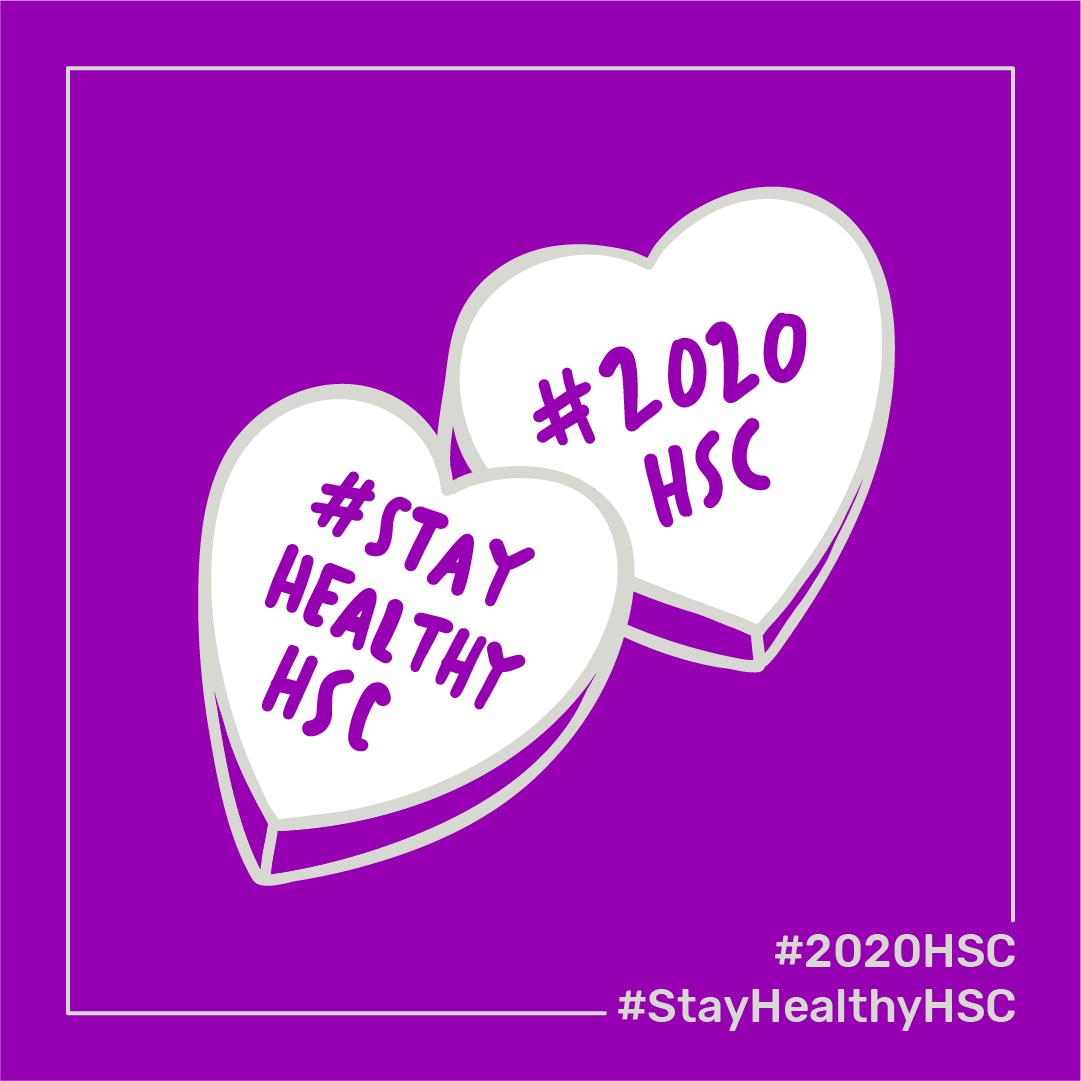
BirdLife Australia 2020 Photo Comp
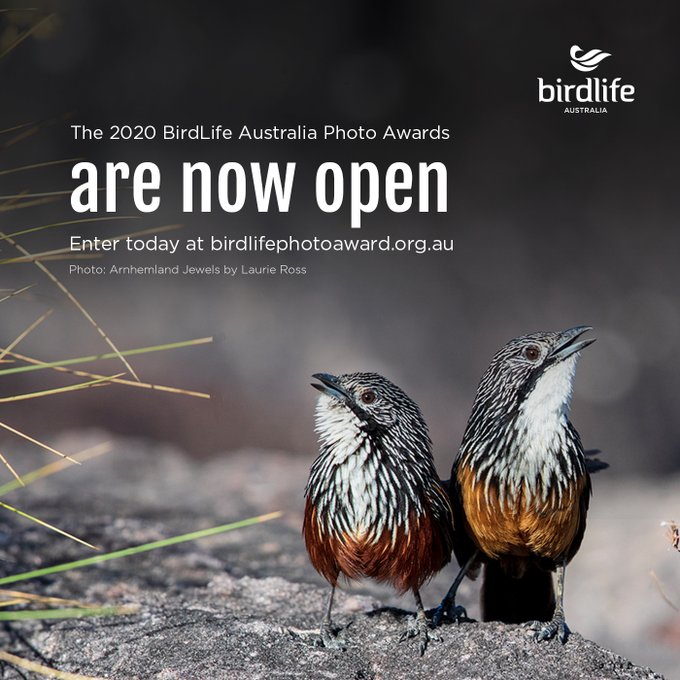
Tick Population Booming In Our Area
Residents from Terrey Hills and Belrose to Narrabeen and Palm Beach report a high number of ticks are still present in the landscape. Local Veterinarians are stating there has not been the usual break from ticks so far and each day they’re still getting cases, especially in treating family dogs.
To help protect yourself and your family, you should:
- Use a chemical repellent with DEET, permethrin or picaridin.
- Wear light-colored protective clothing.
- Tuck pant legs into socks.
- Avoid tick-infested areas.
- Check yourself, your children, and your pets daily for ticks and carefully remove any ticks using a freezing agent.
- If you have a reaction, contact your GP for advice.
Pittwater Powerful Owl Nesting Site Razed: Chicks No Longer Present
Sad news as another action of bad land management in the Northern Beaches LGA causes one Powerful Owl family to abandon the nest hollow on Friday June 26th, along with the chicks that would have been inside the hollow. This pair are known to be regularly having chicks at this time of year (Winter is breeding season for Powerful Owls) and the site is in Pittwater.
There are 30 registered with Council Powerful Owl sites across the northern beaches. It has been suggested a process whereby landowners are notified they are buying or have bought a block in a sensitive area, with endangered species present, form part of Council’s processes. This site was cleared not only of weeds but native species and all understorey as well parts of the council and community owned reserve adjacent to it.
Although Council officers ordered a stop work, the contractors ceased then returned the very next day to complete their razing of the site.
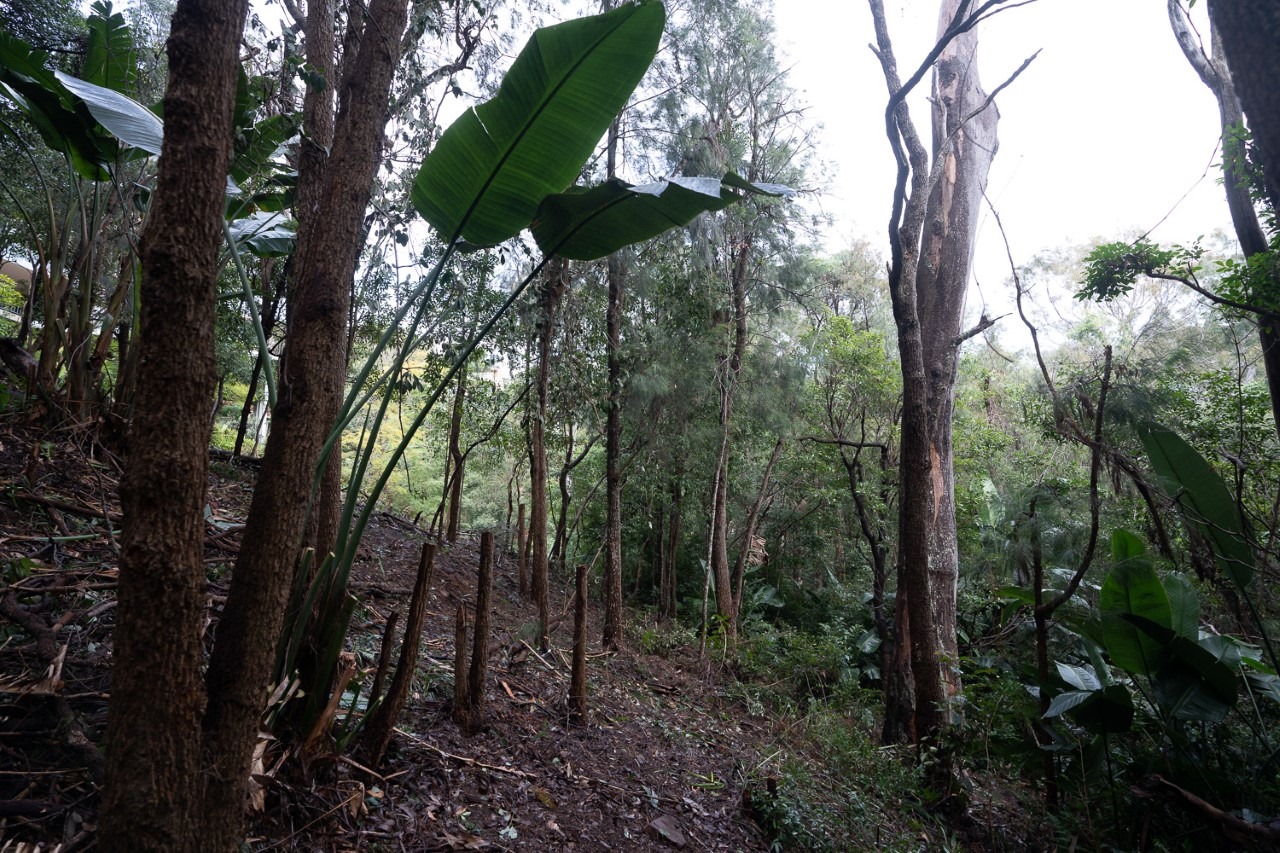
The Council Reserve cleared by contractors employed by private landowners - photo supplied
Pittwater Online News will run more on the Powerful Owl Project and what we can do to help look after these other local residents after the Winter School holidays.
If you are noticing the loss of your resident POs through fire, nest site vegetation removal, dog-walking, bike riding or visitation/photography, you are not alone. This season the Powerful Owl Project have already recorded three owl families moving away from nest trees in response to these activities. In one case the first nesting was early enough that the owls have made a second attempt at breeding, but for our Pittwater owl family - there will be no chicks that survive this year. You may have read about them here in December 2019:
Powerful owls: the reason to protect remnant bushland in our cities by Andrew Gregory. Australian Geographic, December 29, 2019.
Powerful Owl at Clareville - photographed by Paul Wheeler in June 2014
Mona Vale-Warriewood-Turimetta Headland Views On A Winter's Afternoon
Photos taken July 13, 2020 - by A J Guesdon.
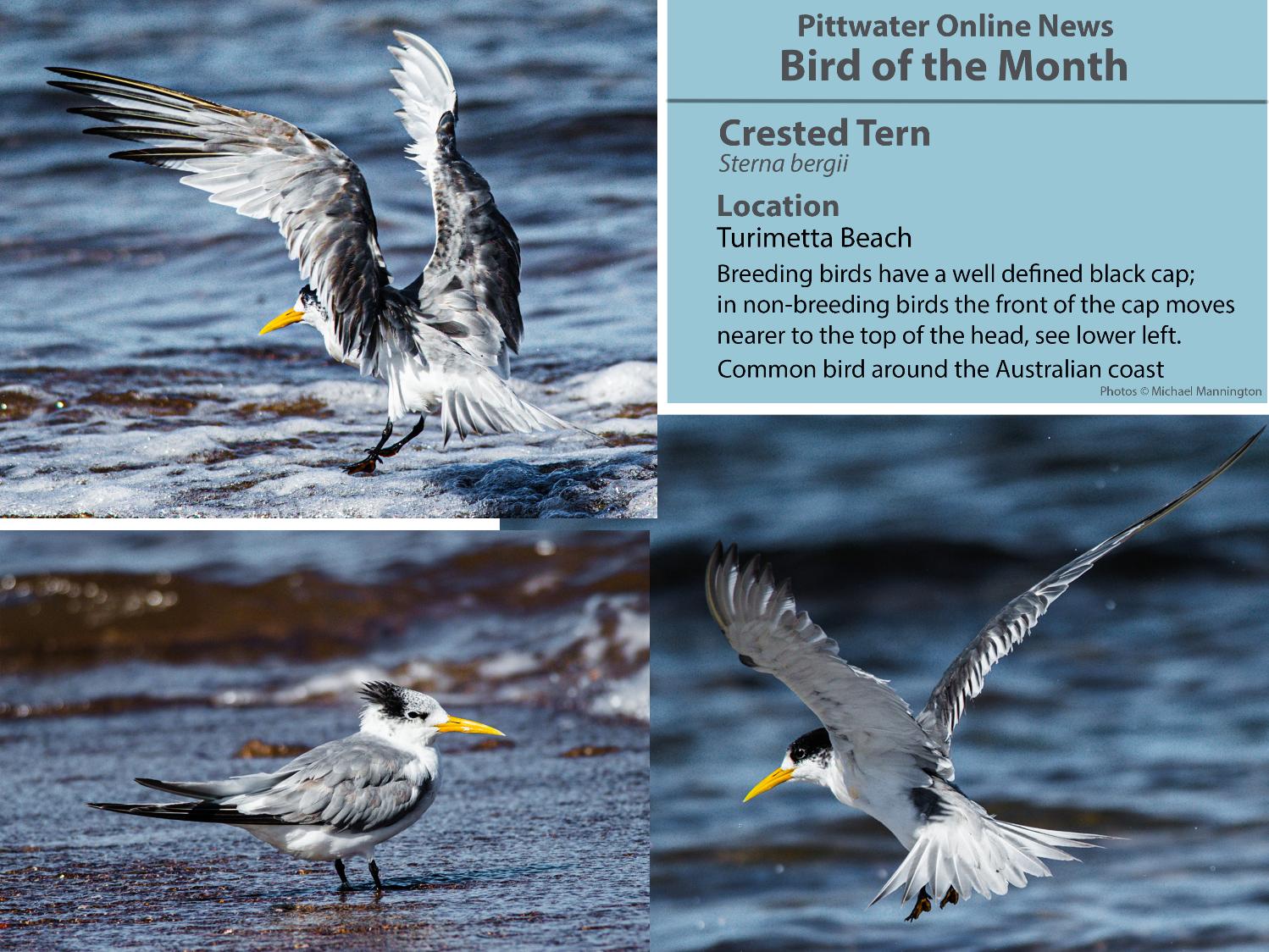
Bushcare Is Back!
Protocols are now in place so you can get involved in your local bushcare group again or sign up to help out to see your investment in your community grow - literally!
Find out how in: Bushcare is Back
Ku-Ring-Gai Chase National Park Precinct Closures Update
Many COVID-19 restrictions have now been lifted from visitor precincts and facilities In Ku-ring-gai Chase National Park. However, several tracks and trails will remain closed while upgrades and remediation works are completed. These closures include:
- Bobbin Head playground
- Warrimoo walking track - public access may be restricted on Wednesday 17 and Thursday 18 June.
- The Basin trail
- The Basin campground and picnic area
- Mackerel service trail
- Salvation Loop and Wallaroo trails
Berowra track, between Apple Tree Bay and the intersection of Mount Ku-ring-gai track, has now reopened. However if you plan to visit, walk with caution as some sections of the track remain uneven.
Closed areas: The Basin campground, Basin trail and Mackerel service trail closed
The following areas will be closed from Monday 1 June until Monday 3 August 2020 while upgrade works and maintenance are underway:
- The Basin trail
- The Basin campground and picnic area
- Mackerel service trail
No public access is permitted. There will be no access to The Basin Aboriginal Engraving Site, Mackerel Beach to The Basin trail, West Head Road or The Basin campground.
For further information call 02 9451 3479 or 02 9472 8949.
Closed areas: Salvation Loop and Wallaroo Trails closed for maintenance.
The Salvation Loop Trail and Wallaroo Trail at West Head will be closed from 2 June 2020 until early July 2020 for maintenance. Machinery will be on the trails so no public access is permitted for safety reasons.
For further information contact; (02) 9451 3479 or (02) 9472 8949
Please remember to practice appropriate social distancing requirements and good hygiene. From Saturday 13 June, the maximum group size for an outdoor gathering will be increasing from 10 to 20 people. Groups are still expected to maintain social distancing. If you arrive at a national park or other public space and it is too crowded to practice social distancing, it is your responsibility to leave the area. Do not wait to be instructed by NPWS staff or police.
The closure of toilets and other facilities will be decided on a case-by-case basis. Necessary site assessments will take place to consider the management of health and safety risk to visitors and staff, and available resourcing to maintain facilities. Access to sanitation products and running water cannot be guaranteed. We recommend bringing hand soap, hand wipes and toilet paper with you to maintain good hygiene as advised by the NSW Government.
If you're visiting the park, please bring a card to pay vehicle entry fees.
For more information about closures, call the NPWS Contact Centre on 1300 072 757, the NPWS North Western Sydney area office on 02 8448 0400 or the NPWS Sydney North area office on 02 9451 3479.
Penalties apply for non-compliance.
Hope For Endangered Butterfly As Central Tablelands Caterpillars Dig Deep To Survive Fires
July 8, 2020
There’s hope for an endangered species of butterfly found only in the Central Tablelands, as scientists confirm clever caterpillars of the purple copper butterfly may have buried themselves underground to shelter from last summer’s bushfires.
“The purple copper butterfly is found only in the central tablelands of NSW and as the fires passed through Lithgow, we were concerned about the impacts of the fire on both the butterfly and its habitat,” said Jess Peterie, Threatened Species Officer, Department of Planning, Industry and the Environment.
The NSW Government’s Saving our Species program recently surveyed 12 fire affected sites around Lithgow, and the results were more positive than first thought.
“Some sites had unburnt patches of habitat that we think gave shelter for the caterpillar life stage of the butterfly.
“We suspect the larvae dug deep into ant nests to survive the fire,” Ms Peterie said.
“Blackthorn bushes, the butterfly larvaes' main food source, were also regrowing in significant numbers, meaning the larvae has the food needed to grow and develop.
“Because the butterfly is so rare and only active for a few months each year, we won’t know the exact impact on adult butterfly numbers until spring this year when we do more surveys.”
Just before the bushfires hit, the purple copper butterfly was spotted for the first time in 10 years on a private property near Mt David, just outside of Bathurst, where it was thought to be locally extinct. The butterfly was also found at a new site not too far away from the Mt David population.
“Given the findings from last year’s survey, undertaken in partnership with the Central Tablelands Local Land Services (LLS), and the positive post-fire habitat surveys, we are hopeful for the future of this species,” Ms Peterie said.
Community awareness and involvement is one of the key priorities in the purple copper butterfly conservation effort.
The butterfly's habitat is a subspecies of Blackthorn often found in open eucalypt woodland. Land managers with this habitat can help protect this species by letting Saving our Species know if there are signs of the purple copper butterfly living on the property.
The purple copper butterfly is smaller than a lot of people imagine, with a wingspan of about 2 cm. It can be identified by its collage of colours - bronze, green, blue, deep brown and of course purple undertones.
Butterflies are not only a beautiful insect but play several roles in the environment. They act as a pollinator; as a food source for other species; and are an important indicator of a healthy ecosystem.
To contact Saving our Species with any information or queries about the purple copper butterfly, please email savingourspecies@environment.nsw.gov.au.
To find out more visit: Purple copper butterfly
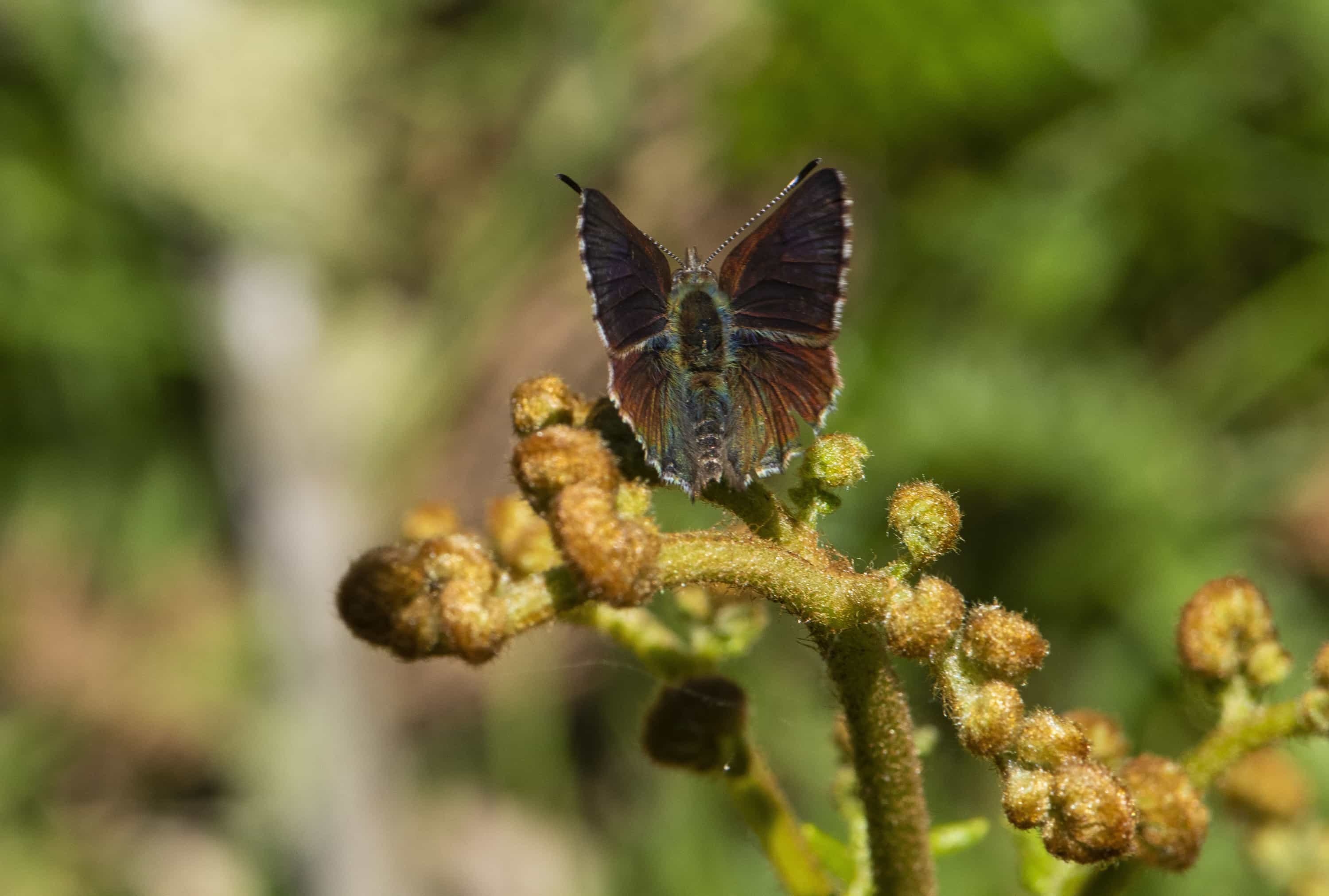
Paralucia spinifera (Purple Copper Butterfly, Bathurst Copper Butterfly) Photo: Stuart Cohen/DPIE
Emergency Actions As Drought Hits Critically Endangered Plant In Mount Kaputar National Park
July 7, 2020
The National Parks and Wildlife Service and the Australian Institute of Botanical Science recently took emergency action after drought severely impacted a critically endangered plant in Mount Kaputar National Park.
National Parks and Wildlife Service (NPWS) Project Officer James Faris said emergency measures were enacted under the NSW Government’s Saving our Species program, when it was discovered just three adult plants of Zieria odorifera ssp. copelandii remained.
“Zieria odorifera ssp. copelandii is a small shrub growing to 20 centimetres high on hard rock faces.
“This is an extremely rare plant species that is only found in the western part of Mount Kaputar National Park.
“This species was so badly impacted by the drought, I personally carried water up the mountain on the weekends during the worst of the dry and watered each of the plants.
“Despite our best efforts, drastic measures had to be taken, when their numbers fell to just three adult plants.
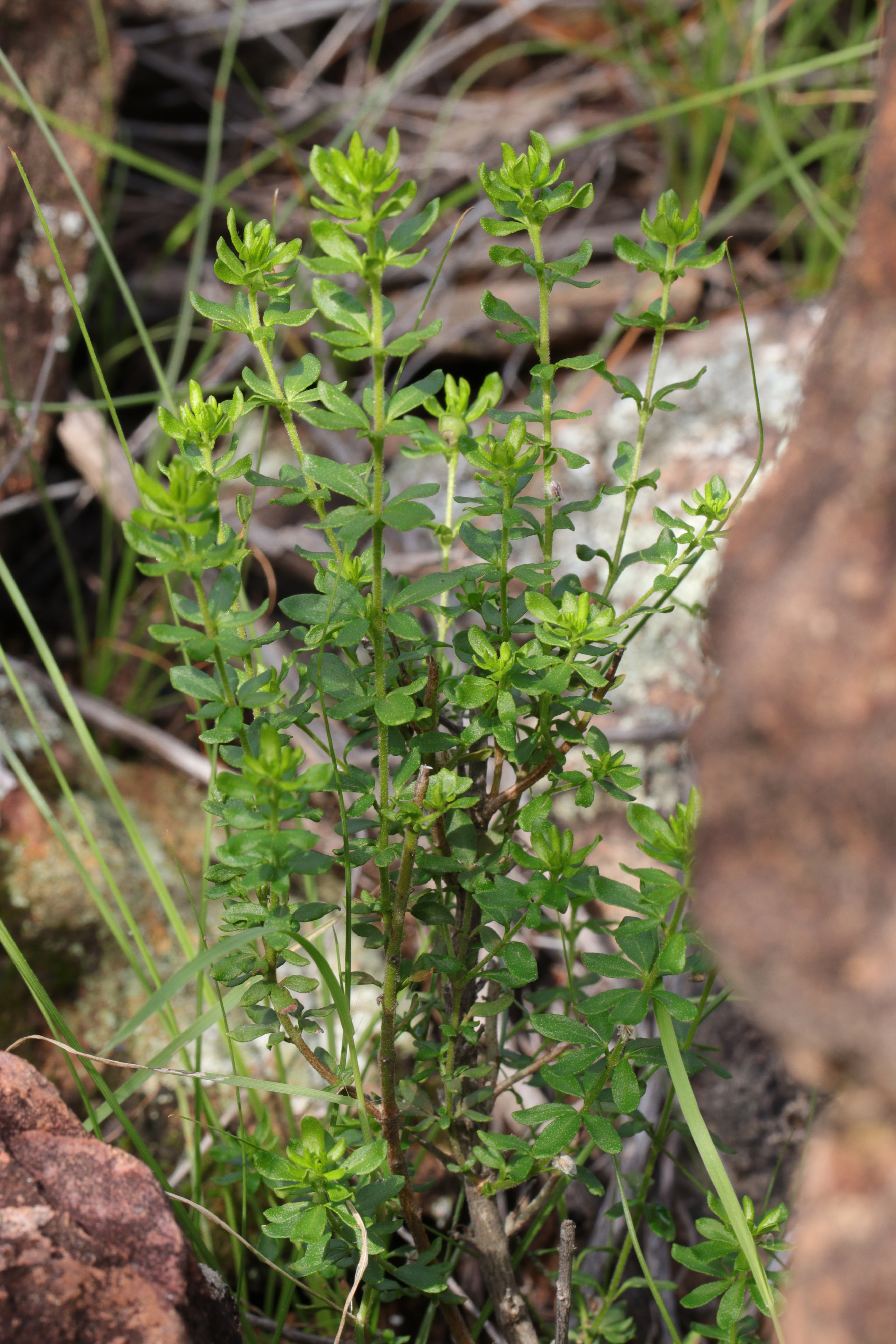
Zieria odorifera ssp. copelandii - Photo: NSW DPIE
“Surveys were immediately undertaken across the site to locate any additional plants. As part of this work, approximately 300 seedlings were located within the site. This has given us some hope that the population will increase,” Mr Faris said.
Scientists based at the Australian Botanic Garden Mount Annan have now harvested a small amount of genetic material for propagation from two of the adult plants plus removing 20 seedlings from the site in the hope of securing its survival.
Dr Peter Cuneo is the Manager of Seedbank and Restoration Research at the Australian Institute of Botanical Science and is based at the Australian Botanic Garden Mount Annan.
“25 healthy seedlings are currently growing at the Nursery at the Australian Botanic Garden Mount Annan, which will help provide an insurance policy against the extinction of these native plants in the wild,” said Dr Cuneo.
Mr Faris said other measures were also underway to protect the remaining plants on site.
“While not impacted by fires which hit parts of Mount Kaputar National Park recently, the plants are susceptible to trampling by visitors and from browsing by macropods and feral animals.
“Cages have now been constructed around the plants to protect them from this kind of disturbance,” Mr Faris said, “these measures are being undertaken alongside pest management in the park.
“Reducing the number of goats and other feral animals reduces the browsing pressure on all flora species.
“We will also be undertaking further follow up surveys within likely habitat to try and find any additional populations of the species.
“The more information we can gather on this species will help us to better understand, manage and monitor the threats it faces.
“There has been some good rainfall in the area since the beginning of the year and we are continuing to monitor the population. Hopefully they will flower and set seed in spring,” Mr Faris said.
The Saving our Species program is the NSW Government's commitment to securing the future of the State's threatened plants and animals. To find out more, or to get involved with Saving our Species visit Help save our threatened species.
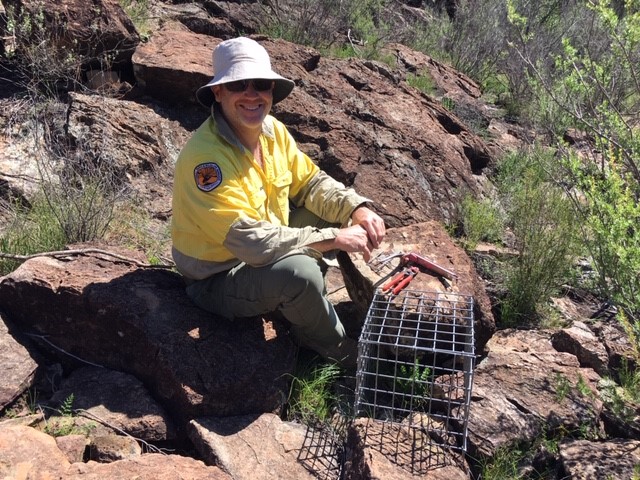
Mount Kaputar National, Project Officer James Faris Photo: Media/DPIE
New Bridge Open At Warrumbungle National Park
July 9, 2020
Access to campgrounds at Warrumbungle National Park has been improved by a new pedestrian bridge, completed as part of one of the state’s largest park infrastructure projects.
NPWS Area Manager John Whittall, said the Mopra Creek Pedestrian Bridge would provide greater accessibility for seniors, families, and those with special needs or reduced mobility.
“I’m proud to announce the opening of this bridge, which signifies a long-term commitment to improving access to national parks in NSW,” Mr Whittall said.
“It’s great to see the project come to fruition in time for the July school holidays, and I hope many visitors will make use of it over the coming weeks.
“The bridge will allow for safer and easier pedestrian access between campgrounds, which is particularly important as we’ve seen a rise in campers since travel restrictions eased.
“With overseas travel off the table a lot of people seem to be holidaying and adventuring locally, which is really great for the local economy and encouraging for these communities.”
The Mopra Creek Pedestrian Bridge was completed in just 40 days and was funded by the state government’s Improving Access to National Parks Program (IANPP).
The IANPP is the largest ever investment in visitor infrastructure within NSW’s national parks, with $150 million provided to improve access and visitation over 4 years.
NPWS reminds all campers that bookings are essential in order to meet the current public health guidelines.
For more information visit: Camping safety
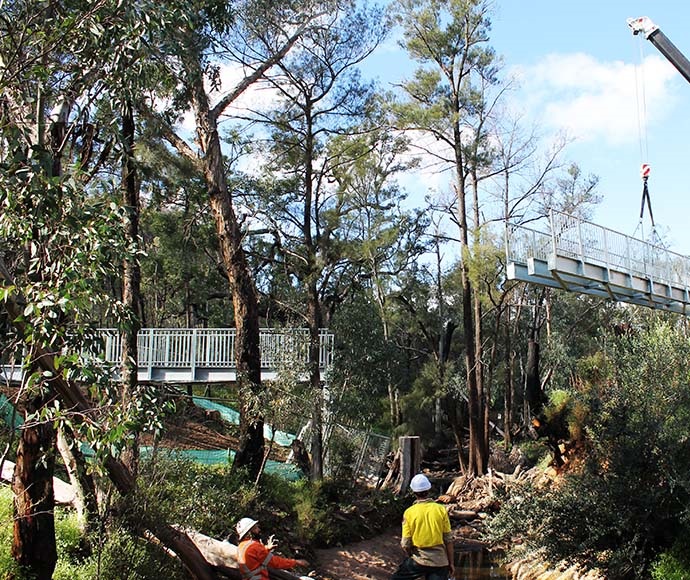
Mopra Creek Pedestrian Bridge, Warrumbungle National Park Photo: Media/DPIE
Cudgen Nature Reserve Expanded To Protect More Koala Habitat
July 9, 2020
The NSW Government has acquired an additional 89 hectares of land to expand Cudgen Nature Reserve and aid the recovery of the Tweed koala population.
Environment Minister Matt Kean said the addition would help to provide long-term habitat protection for native plants and animals on the Tweed Coast, including the endangered Tweed and Brunswick Rivers koala colony.
“Securing land for koala habitat conservation is one of my priorities as Environment Minister as well as a core pillar of the NSW Koala Strategy, which aims to secure the future of koalas in the wild,” Mr Kean said.
“This addition is a significant boost for koala conservation on the Tweed Coast. It will protect core koala habitat and reduce the potential for fragmentation.
By working with Tweed Shire Council on a mutually beneficial land exchange, we’ve managed to increase the area of koala habitat protected in Cudgen Nature Reserve and also provide a site that council can use as a koala holding and soft release site to aid sick and injured koalas.
Member for Tweed Geoff Provest said, “By adding this land to national parks system, we’re building a better connected reserve for Tweed Coast koalas, ensuring there will be a safe home for the colony in perpetuity.”
“Cudgen Nature Reserve is part of the largest remaining stand of native vegetation on the Tweed Coast. It is home to an exceptionally high diversity of native animal and plant species.
“In addition to koalas, the reserve is home a number of threatened and endangered animal species, including the long-nosed potoroo, the glossy black cockatoo and the little bent-wing bat.
The Cudgen Nature Reserve, is located on the Tweed Coast in far north-eastern NSW, has a total area of 897.4 hectares. The reserve is considered to be of regional and state significance for the conservation of native fauna.
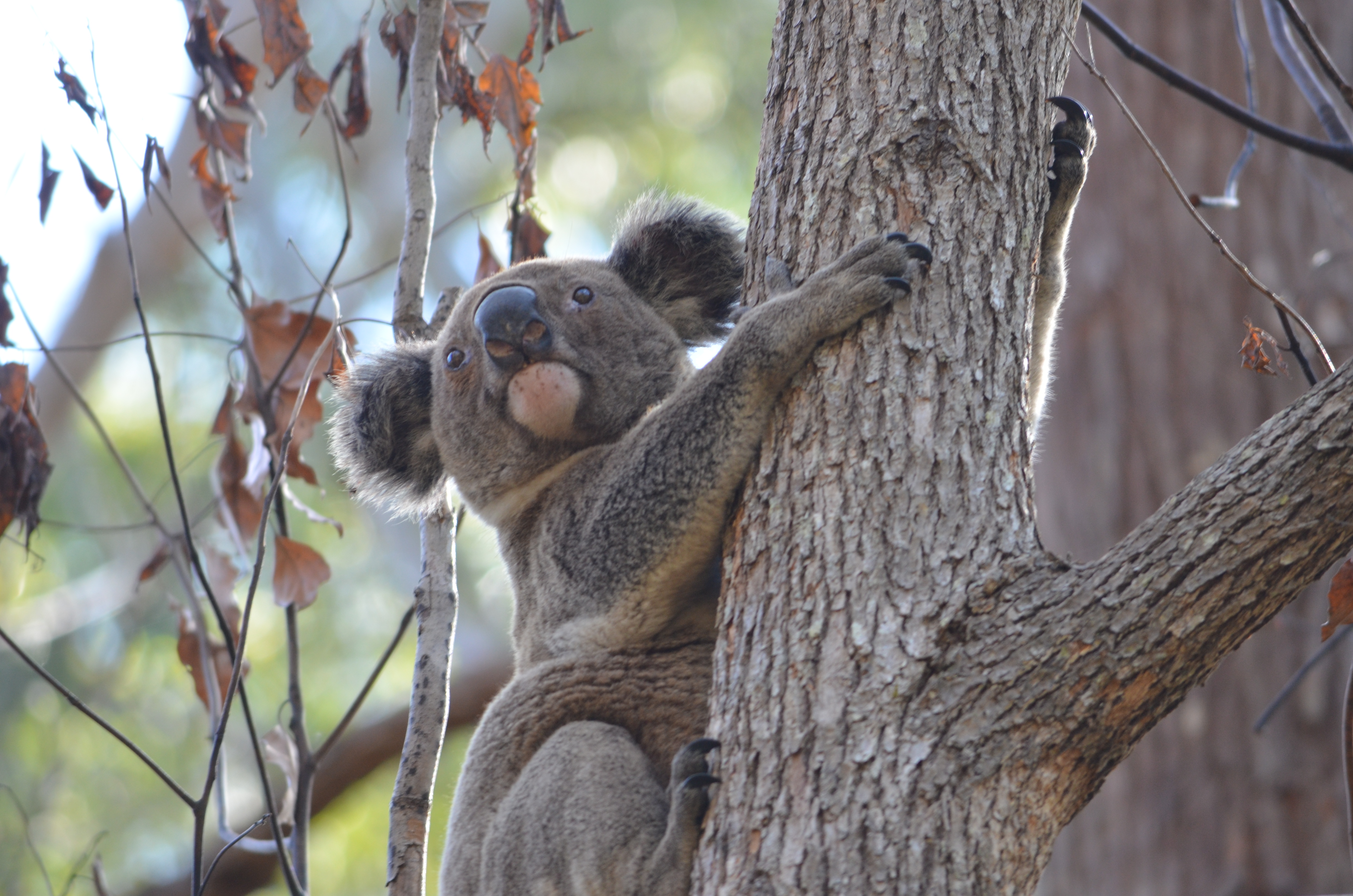
Koala between the Tweed and Brunswick Rivers east of the Pacific Highway - Credit Scott Hetherington DPIE
Koalas, Birds And Boardwalks - Coffs Coast National Parks Booming
July 9, 2020
With a $275,000 boardwalk project planned for Muttonbird Island and more than 3500 new koala feed trees growing in Bongil Bongil National Park, the Coffs Coast’s national parks are flourishing.
Environment Minister Matt Kean announced the 330 metre raised boardwalk project for Muttonbird Island during his visit to the Coffs Coast today.
“The elevated boardwalk will improve visitor access to the spectacular nature reserve while also benefiting the island’s most important inhabitants – the muttonbirds,” Mr Kean said.
Member for Coffs Harbour Gurmesh Singh said more than 150,000 people visit Muttonbird Island every year to take in the reserve’s unforgettable views, enjoy whale watching and experience the spectacularly raucous nesting site of the migratory wedge-tailed shearwater.
“The elevated, fibreglass mesh walkway will enhance the views for visitors as they traverse the island as well as lessening the disturbance to shearwaters’ nesting burrows and potentially opening up new areas as nesting habitat,” Mr Singh said.
During his visit to the Coffs Coast, Minister Kean also visited the site of the unique and innovative ‘Tree Parents Project’, which has seen more than 3500 primary koala food trees planted and nurtured in Bongil Bongil National Park thanks to the commitment of the program’s 140 volunteers.
“This innovative community partnership has restored over 50 hectares of degraded koala habitat and is a fantastic example of a rewarding and highly productive partnership between a NSW Government agency and the local community.
As part of the ‘Tree Parents Project’, teams of local volunteers were trained, tooled-up and then offered a two-hectare plot of land within Bongil Bongil National Park to cultivate 60 koala food trees each.
“A total of 3500 food trees, including Tallowwoods, Grey Gums, Swamp Mahoganies and Forest Oaks have been planted on the site,” Mr Kean said.
New England To Light Up With Second NSW Renewable Energy Zone
July 10, 2020
New England will become a NSW powerhouse, with the NSW Government today announcing a $79 million plan to develop a second, massive 8,000 MW Renewable Energy Zone (REZ) in the region.
Deputy Premier John Barilaro said the Government was forging ahead with its plans to deliver new energy infrastructure that will lower electricity bills, create jobs and make regional NSW the home of renewable energy investment.
“The New England REZ is expected to attract $12.7 billion in investment, support 2,000 construction jobs and 1,300 ongoing jobs – all while lowering energy prices and future-proofing the regions,” Mr Barilaro said.
“Regional NSW is the best place in Australia for renewable energy investment and the jobs it creates, and this funding allows us to unlock that potential.”
Energy Minister Matt Kean said the massive 8,000 MW New England REZ was the biggest commitment to cheap, clean energy in the State’s history.
“The nine-fold level of interest in the Central-West Orana REZ was astounding, so it makes absolute sense to go even bigger with the New England REZ,” Mr Kean said.
“The New England REZ will be able to power 3.5 million homes and, when coupled with Central-West Orana REZ, sets the State up to become the number one destination across Australia for renewable energy investment.”
Member for Northern Tablelands Adam Marshall said the REZ represented an excellent opportunity for the region to create jobs, diversify its local economy and improve local roads and telecommunications infrastructure.
“Our region is fast becoming the renewables capital of NSW and we’re home to some of the best renewable energy resources in the country, with flagship wind and solar projects at Glen Innes and Armidale living proof of this potential,” Mr Marshall said.
“Today’s official declaration of New England as an 8,000 MW REZ is a long-awaited milestone for the future of the region and I am determined to see community-wide benefits flow from this announcement.”
REZs involve making strategic transmission upgrades to bring multiple new generators online in areas with strong renewable resources and community support.
The New England REZ is the second Renewable Energy Zone planned for NSW and will be built in stages, with the delivery timetable to be developed throughout the detailed planning process.
For more information go to: Renewable Energy Zones
Blue Mountains National Park Plan Of Management Proposed Amendment: Public Consultation
The Proposed Amendment to the Blue Mountains National Park Plan of Management and Govetts Leap Draft Visitor Precinct Plan are available for public review and comment. View Blue Mountains National Park Proposed Amendment to Plan of Management - PDF, 978kb
Public exhibition of the proposed amendment and draft visitor precinct plan provides members of the community with an opportunity to have a say in planned improved accessibility works in Blue Mountains National Park. Comments close 17 August 2020.
What is a plan of management?
Parks and reserves established under the National Parks and Wildlife Act 1974 must have a plan of management. The plan includes information on important park values and provides directions for future management. The plan of management is a legal document, and after the plan is adopted all operations and activities in the park must be in line with the plan. From time to time plans of management are amended to support changes to park management or proposed works.
Why is the plan being amended now?
Blue Mountains National Park is the most visited park in New South Wales, receiving more than 8 million visits in 2018. Visitor infrastructure improvements will enhance and disperse the visitor experience and improve protection of the park's values. The improvements to Govetts Leap visitor precinct will elevate the quality of interpretation and promotion of the park's World Heritage values.
The amendment relates to visitor facility upgrades to support both increased and better-dispersed visitation and includes:
- upgraded and increased capacity parking areas at Govetts Leap
- upgraded facilities to allow improved access for people with disabilities and/or restricted mobility
- enable pre-existing overnight stay facilities at Green Gully visitor precinct including a camping area and cabins.
What opportunities will the community have to comment?
The proposed amendment and draft visitor precinct plan are on public exhibition until Monday 17 August 2020. Everyone is invited to review the amendment and draft visitor precinct plan and provide comments.
When will the amended plan of management and visitor precinct plan be finalised?
At the close of the public exhibition period, we consider all submissions on the plan amendment and prepare a submissions report. We provide the Blue Mountains Regional Advisory Committee and the National Parks and Wildlife Advisory Council with the proposed amendment, all the submissions and the submissions report. They consider the documents, make comments on the amendment or suggest changes, and the Council provides advice to the Minister for Energy and Environment.
The Minister considers the amendment, submissions and advice, makes any necessary changes and decides whether to adopt the amendment under the National Parks and Wildlife Act 1974. Once an amendment is adopted, it is published on the Department's website and key stakeholders, including those who made a submission on the draft plan, will be notified.
Submissions on the draft visitor precinct plan will be reviewed in conjunction with the Blue Mountains Regional Advisory Committee. The finalised Govetts Leap visitor precinct plan will be published on the Department's website.
How can I get more information about the proposed amendment?
For further information on the plan of management please contact the NPWS Park Management Planning Team at npws.parkplanning@environment.nsw.gov.au
Where can I see a printed copy of the proposed amendment?
Copies are available at the following locations:
- National Parks and Wildlife Service Heritage Centre, Blackheath – end of Govetts Leap Road
- Blue Mountains City Council, Katoomba – Ground floor foyer, 2-6 Civic Place
How can I comment on the proposed amendment and draft visitor precinct plan?
Public exhibition of the proposed amendment and draft visitor precinct plan is from Friday 26 June until Monday 17 August 2020. You are invited to comment on the amendment by sending a written submission during this time.
To help us make the best use of your feedback:
- Please tell us what issue or part of the plan you are talking about. One way you can do this is to include the section heading and/or page number from the amendment in your submission.
- Tell us how we can make the plan better. You may want to tell us what you know about the park or how you or other people use and value it.
We are happy to hear any ideas or comments and will consider them all, but please be aware that we can't always include all information or ideas in the final plan.
Your privacy
Your submission will be provided to two advisory bodies. Your comments on the draft plan may include 'personal information'. The Department complies with the NSW Privacy and Personal Information Protection Act 1998, which regulates the collection, storage, quality, use and disclosure of personal information. For details see our privacy page. Information that in some way identifies you may be gathered when you use our website or send us an email.
If you indicate in your written submission that you object to your submission being made public, we will ask you before releasing your submission in response to any access applications under the Government Information (Public Access) Act 2009.
Have your say
Public exhibition is from 26 June 2020 to 17 August 2020.
You can provide your written submission in any of the following ways:
Post your written submission to:
Manager Planning Evaluation and Assessment
Locked Bag 5022
Parramatta NSW 2124
Email your submission to: npws.parkplanning@environment.nsw.gov.au
Make a submission online by using the online form here
Doodle Comer Swamp Nature Reserve Draft Plan Of Management: Public Consultation
The Doodle Comer Swamp Nature Reserve Draft Plan of Management is available for review and comment.
Public exhibition of the draft plan provides an important opportunity for members of the community to have a say in the future management of Doodle Comer Swamp Nature Reserve. Comments close 28 September 2020.
This plan has been prepared using a new format and presented as 2 separate documents:
- The plan of management which is the 'legal' document that will be provided to the Minister for formal adoption. This is the document we are seeking your feedback on.
- The planning considerations document supports the plan of management. It includes detailed information on park values (e.g. threatened species and cultural heritage) and threats to these values. A summary of this information is in the plan of management.
Doodle Comer Swamp Nature Reserve encompasses about half of the Doodle Comer Swamp, an ephemeral wetland listed in the National Directory of Important Wetlands and the largest wetland of its type in southern NSW. The catchment for Doodle Comer Swamp is unregulated and the wetland has an unaltered water flow regime, now uncommon in New South Wales inland wetlands and of high conservation value.
When inundated, Doodle Comer Swamp attracts large numbers of waterbirds that use the swamp for breeding and foraging. When dry, the wetland provides habitat for the threatened bush stone-curlew, listed as endangered in New South Wales. Other threatened animals found include brolga and superb parrot. The reserve contains several threatened ecological communities such as Inland Grey Box Woodland and Sandhill Pine Woodland.
Doodle Comer Swamp is part of the Country of the Wiradjuri speaking nation and is part of a larger network of swamps and lagoons across the Riverina that formed a significant part of the cultural landscape, sustaining the Wiradjuri with an extensive range of resources for thousands of years. A diverse range of Aboriginal sites exist in the reserve and surrounding area and in 2016 Doodle Comer was declared an Aboriginal place recognising these values and the wetland's special significance to Aboriginal culture.
What is a plan of management?
Parks and reserves established under the National Parks and Wildlife Act 1974 need to have a plan of management. The plan includes information on important park values and provides directions for future management. The plan of management is a legal document, and after the plan is adopted all operations and activities in the park must be in line with the plan. From time to time plans of management are amended to support changes to park management. Visit: Doodle Comer Swamp Nature Reserve Draft Plan of Management - PDF, 2.3MB
The National Parks and Wildlife Act sets out the matters that need to be considered when preparing a plan of management. These matters are addressed in the supporting Doodle Comer Swamp Nature Reserve Draft Plan of Management: Planning considerations document.
Why is a plan being prepared now?
Since the park`s reservation in 2011, it has been managed according to a statement of management intent. After a park's reservation and before the release of its plan of management, a statement of management intent is prepared outlining the management principles and priorities for the park's management. This statement documents the key values, threats and management directions for the park. It is not a statutory document and a plan of management will still need to be prepared according to the National Parks and Wildlife Act 1974.
Publication of a draft or final plan will replace the statement of management intent for the relevant parks covered.
What opportunities will the community have to comment?
The draft plan of management is on public exhibition until 28 September 2020 and anyone can review the plan of management and provide comments.
When will the plan of management be finalised?
At the end of the public exhibition period in September 2020 we will review all submissions, prepare a submissions report and make any necessary changes to the draft plan of management. The Far West Regional Advisory Committee and the National Parks and Wildlife Advisory Council will then review the plan along with the submissions and report, as required by the National Parks and Wildlife Act.
Once their input has been considered and any further changes made to the plan of management, we provide the plan to the Minister for Energy and Environment. The plan of management is finalised when the Minister formally adopts the plan under the National Parks and Wildlife Act. Once a plan is adopted it is published on the Department website and a public notice is advertised in the NSW Government Gazette.
How can I get more information about the draft plan?
For further information on the plan of management please contact the Park Management Planning Team at npws.parkplanning@environment.nsw.gov.au.
How can I comment on the draft plan?
Public exhibition for the plan of management is from 26 June 2020 until 28 September 2020. You are invited to comment on the draft plan by sending a written submission during this time.
Have your say
Public exhibition is from 26 June 2020 to 28 September 2020.
You can provide your written submission in any of the following ways:
Post your written submission to:
Manager Planning Evaluation and Assessment
Locked Bag 5022
Parramatta NSW 2124
Email your submission to: npws.parkplanning@environment.nsw.gov.au
Make a submission online by using the online form here
Tollingo Nature Reserve And Woggoon Nature Reserve Draft Plan Of Management: Public Consultation
The Tollingo Nature Reserve and Woggoon Nature Reserve Draft Plan of Management is available for review and comment.
Public exhibition of the draft plan provides an important opportunity for members of the community to have a say in the future management of Tollingo Nature Reserve and Woggoon Nature Reserve. Comments close 28 September 2020.
This plan has been prepared using a new format which is presented as two separate documents:
- The plan of management which is the legal document that will be provided to the Minister for formal adoption. This is the document we are seeking your feedback on.
- The planning considerations document supports the plan of management. It includes detailed information on park values (e.g. threatened species and cultural heritage) and threats to these values. A summary of this information is provided in the plan of management.
Tollingo Nature Reserve and Woggoon Nature Reserve are significant as two of the largest remaining mallee remnants in New South Wales. The largely intact old-age mallee vegetation is rare in the Central West, which is mostly used for agriculture. The reserves provide habitat for the endangered malleefowl and other native animals.
Tollingo Nature Reserve is shared Country for the Ngiyampaa and Wiradjuri people, while Woggoon Nature Reserve is within Wiradjuri traditional Country.
What is a plan of management?
Parks and reserves established under the National Parks and Wildlife Act 1974 need to have a plan of management. The plan includes information on important park values and provides directions for future management. The plan of management is a legal document, and after the plan is adopted all operations and activities in the park must be in line with the plan. From time to time plans of management are amended to support changes to park management.
The National Parks and Wildlife Act sets out the matters that need to be considered when preparing a plan of management. These matters are addressed in the supporting Tollingo Nature Reserve and Woggoon Nature Reserve Draft Planning Considerations document. This document may be updated from time to time, for example, to include new information on the values of the park (e.g. new threatened species), new management approaches (e.g. a new pest management technique) or new park programs. Visit Tollingo Nature Reserve and Woggoon Nature Reserve Draft Plan of Management - PDF 2.3MB
Why is a plan being prepared now?
This plan of management will replace the statement of management intent which was approved in 2014. Statements of management intent are non-statutory documents which summarise the key values and management directions for a park.
Since reservation in 1988 and 1974 respectively, Tollingo and Woggoon nature reserves have been managed according to a statement of management intent. After a park's reservation and before the release of its plan of management, a statement of management intent is prepared outlining the management principles and priorities for the park's management. This statement documents the key values, threats and management directions for the park. It is not a statutory document and a plan of management will still need to be prepared according to the National Parks and Wildlife Act 1974. Publication of a draft or final plan will replace the statements of management intent for the relevant parks covered.
What opportunities will the community have to comment?
The draft plan of management and planning considerations are on public exhibition until 28 September 2020 and anyone can provide comments.
When will the plan of management be finalised?
At the end of the public exhibition period in September 2020, National Parks and Wildlife Service (NPWS) will review all submissions, prepare a submissions report and make any necessary changes to the draft plan of management. The West Regional Advisory Committee and the National Parks and Wildlife Advisory Council will then review the plan along with the submissions and report, as required by the National Parks and Wildlife Act.
Once their input has been considered and any further changes made to the plan of management, we provide the plan to the Minister for Energy and Environment. The plan of management is finalised when the Minister adopts the plan under the National Parks and Wildlife Act. Once a plan is adopted it is published on the Department's website.
How can I get more information about the draft plan?
For further information on the plan of management please contact the NPWS Park Management Planning Team at npws.parkplanning@environment.nsw.gov.au
Where can I see a printed copy of the draft plan?
Hard copies are available for viewing at the following locations:
- National Parks and Wildlife Service (NPWS) office, Camp Street, Forbes
- Condobolin Library, 130 Bathurst Street, Condobolin
How can I comment on the draft plan?
Public exhibition for the plan of management is from 26 June until 28 September 2020. You are invited to comment on the draft plan by sending a written submission during this time.
Your privacy
Your submission will be provided to a number of statutory advisory bodies (including the relevant regional advisory committee and the National Parks and Wildlife Advisory Council). Your comments on the draft plan may include 'personal information'. the Department complies with the NSW Privacy and Personal Information Protection Act 1998 which regulates the collection, storage, access, amendment, use and disclosure of personal information. See our privacy webpage for details. Information that in some way identifies you may be gathered when you use our website or send us correspondence.
If an application to access information under the Government Information (Public Access) Act 2009 requests access to your submission, your views about release will be sought if you have indicated that you object to your submission being made public.
While all submissions count, they are most effective when we understand your ideas and the outcomes you want for park management. Some suggestions to help you write your submission are:
- Write clearly and be specific about the issues that are of concern to you.
- Note which part or section of the plan your comments relate to.
- Give reasoning in support of your points – this makes it easier for us to consider your ideas and will help avoid misinterpretation.
- Tell us specifically what you agree/disagree with and why you agree/disagree.
- Suggest solutions or alternatives to managing the issue if you can.
Have your say
Public exhibition is from 26 June 2020 to 28 September 2020.
You can provide your written submission in any of the following ways:
Post your written submission to:
Manager Planning Evaluation and Assessment
Locked Bag 5022
Parramatta NSW 2124
Email your submission to: npws.parkplanning@environment.nsw.gov.au
Make a submission online by using the online form here
Limeburners Creek National Park, Goolawah National Park And Goolawah Regional Park: Public Consultation
Planning for the future –NSW National Parks and Wildlife Service is preparing a new plan of management for Limeburners Creek National Park, Goolawah National Park and Goolawah Regional Park.
These parks are in the traditional Country of the Dunghutti and Birpai Aboriginal Peoples. The parks play a fundamental role in the lives of local Aboriginal people, helping to maintain a tangible link to the past and enabling continued connections to Country.
The existing plan of management for Limeburners Creek National Park was written in 1998. The areas that are now Goolawah National Park and Goolawah Regional Park were formerly Goolawah State Park and Crown land. Initial community consultation about the Goolawah parks was undertaken in 2012, soon after they were transferred to National Parks and Wildlife Service.
Since this time large new areas have been added to the parks, including the intertidal zone on some of the beaches. There has also been a steady increase in visitors, and new recreational uses have become popular. Information about the values of the park has improved and new approaches to managing fire, pests and weeds have been developed.
Accommodating all of these visitors, maintaining the unique visitor experience and protecting the environment is challenging. Good planning is essential to manage increasing demand and provide sustainable visitor facilities and opportunities while minimising impacts and retaining the natural and low key nature of this beautiful stretch of coast. The development of a new combined plan of management will help to protect the parks' unique values and improve the effectiveness of how we manage the parks.
What opportunities will the community have to contribute to the development of a new plan of management?
Previous consultation, including a community forum, identified a range of issues important to the local community which will be considered in the new plan. It is now time to reach out and reconnect with our neighbours, stakeholders and local communities, as well as extending the invitation to the wider community of park users.
There are now 2 opportunities to be involved in the development of the plan of management for Goolawah Regional Park and Goolawah and Limeburners Creek national parks:
- During the development of the draft plan - register your interest below to receive updates and be notified of further consultation dates. Complete the form to provide your ideas on what you believe are the most important values of the parks and how they should be managed in the future. Your input will be used to draft a plan that reflects community values and aspirations.
- During public exhibition of the draft plan - there will be another opportunity to have your say when the draft plan of management is completed and put on public exhibition for 90 days. Anyone can submit comments on the draft plan during this time.
Register your interest
Complete the online form here to register your interest, provide initial input and be notified of further consultation dates. Tell us what is important to you about the parks and what you would like to see in the future. Comments close 30 October 2020.
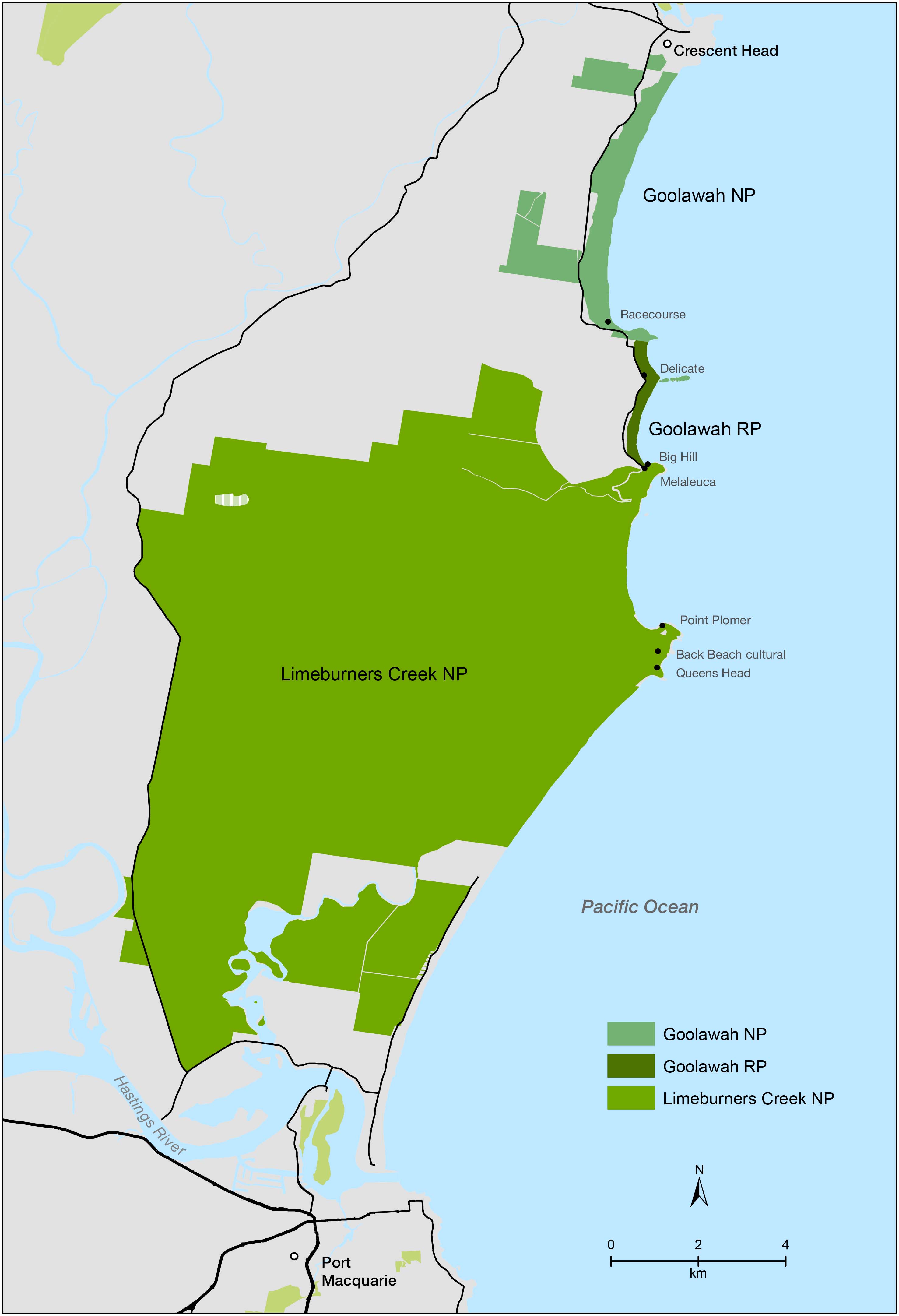
Limeburners Creek National Park, Goolawah National Park and Goolawah Regional Park engagement map Photo: DPIE
Where are they now? The stories of the 119 species still in danger after the bushfires, and how to help
Anthea Batsakis, The Conversation; Nicole Hasham, The Conversation, and Wes Mountain, The ConversationThis article is part of Flora, Fauna, Fire, a special project by The Conversation that tracks the recovery of Australia’s native plants and animals after last summer’s bushfire tragedy. Explore the project here and read more articles here.
Before the summer bushfires destroyed vast expanses of habitat, Australia was already in the midst of a biodiversity crisis. Now, some threatened species have been reduced to a handful of individuals – and extinctions are a real possibility.
The Kangaroo Island dunnart, a small marsupial, was listed as critically endangered before the bushfires. Then the inferno destroyed 95% of its habitat.
Prospects for the Banksia Montana mealybug are similarly grim. This flightless insect lives only on one species of critically endangered plant, at a high altitude national park in Western Australia. The fires destroyed 100% of the plant’s habitat.
Read more: After the bushfires, we helped choose the animals and plants in most need. Here's how we did it
And fewer than 100 western ground parrots remained in the wild before last summer, on Western Australia’s south coast. Last summer’s fires destroyed 40% of its habitat.
Fish, crayfish and some frogs are also struggling. After the fires, heavy rain washed ash, fire retardants and dirt into waterways. This can clog and damage gills, and reduces the water’s oxygen levels. Some animals are thought to have suffocated.
Here, dozens of experts tell the stories of the 119 species most in need of help after our Black Summer.
How Can I Help?
Recovery from Australia’s bushfire catastrophe will be a long road. If you want to help, here are a few places to start.
Donate
Australian Wildlife Conservancy
Also see this list of registered bushfire charities
Volunteer
NSW National Parks and Wildlife Service
Queensland Parks and Wildlife Service
Conservation Volunteers Australia
Anthea Batsakis, Deputy Editor: Environment + Energy, The Conversation; Nicole Hasham, Section Editor: Energy + Environment, The Conversation, and Wes Mountain, Multimedia Editor, The Conversation
This article is republished from The Conversation under a Creative Commons license. Read the original article.
Our helicopter rescue may seem a lot of effort for a plain little bird, but it was worth it
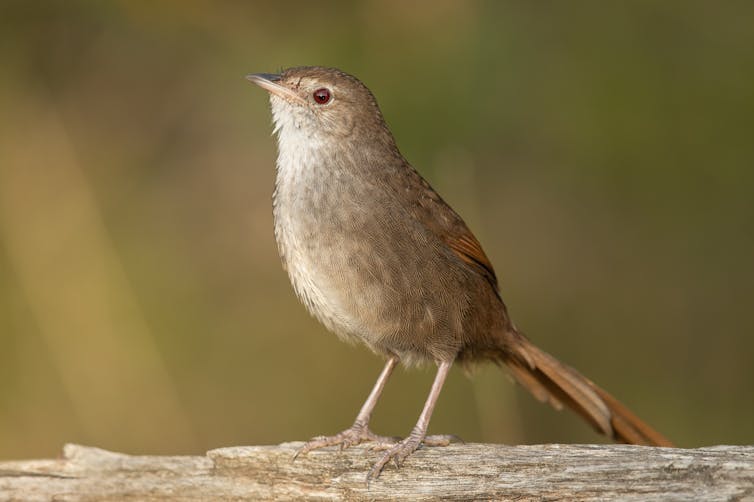
This article is part of Flora, Fauna, Fire, a special project by The Conversation that tracks the recovery of Australia’s native plants and animals after last summer’s bushfire tragedy. Explore the project here and read more articles here.
As we stepped out of a military helicopter on Victoria’s east coast in February, smoke towered into the sky. We’d just flown over a blackened landscape extending as far as the eye could see. Now we were standing in an active fireground, and the stakes were high.
Emergency helicopter rescues aren’t usually part of a day’s work for conservation scientists. But for eastern bristlebirds, a potential disaster loomed.
Our mission was to catch 15-20 bristlebirds and evacuate them to Melbourne Zoo. This would provide an insurance population of this globally endangered species if their habitat was razed by the approaching fire.
As climate change grows ever worse, such rescues will be more common. Ours showed how it can be done.
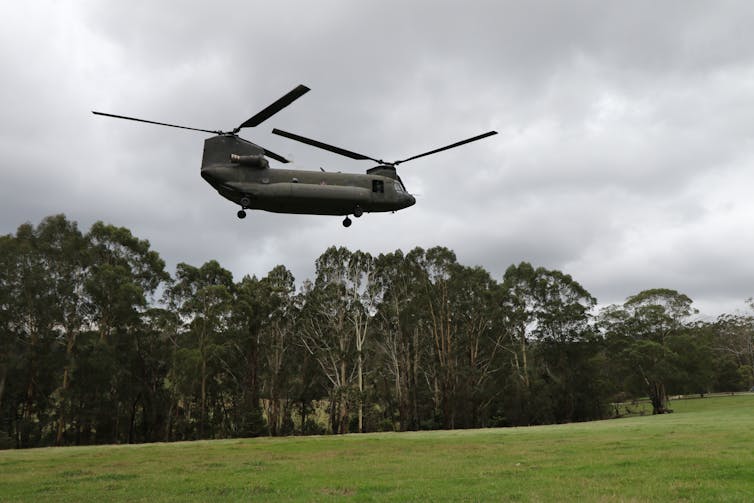
The Plight Of The Eastern Bristlebird
Such a rescue may seem like a lot of effort for a small, plain brown bird. But eastern bristlebirds are important to Australia’s biodiversity.
They continue an ancient lineage of songbirds that dates back to the Gondwanan supercontinent millions of years ago. They’re reminders of wild places that used to exist, unchanged by humans.
Read more: Yes, the Australian bush is recovering from bushfires – but it may never be the same
These days, coastal development has shrunk the eastern bristlebird’s habitat. The birds are feeble flyers, and so populations die out when their habitat patches become too small.
Fewer than 2,500 individuals remain, spread across three locations on Australia’s east coast including a 400-strong population that straddles the Victoria-New South Wales border at Cape Howe. Losing them would be a huge blow to the species’ long term prospects.
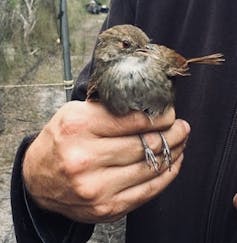
A Rollercoaster Ride
On the day of our rescue, bushfires had been raging on Australia’s east coast for several months. The so-called Snowy complex fire that started in late December had razed parts of Mallacoota on New Year’s Eve then burnt into NSW. Now, more than a month later, that same fire had crossed back over the state border and was burning into Cape Howe.
Our 11-person field team had two chances over consecutive mornings. Using special nets, we caught nine eastern bristlebirds on one morning, and six the next. As we worked, burnt leaves caught in our nets – a tangible reminder of how close the fire was.
The captured birds were health-checked then whisked – first by 4WD, then boat and car – to a waiting flight to Melbourne. From there they were driven to special enclosures at Melbourne Zoo.
On the second day a wind change intensified the bushfire and cut short our time. As we evacuated under a darkening sky, it seemed unlikely Cape Howe would escape the flames.
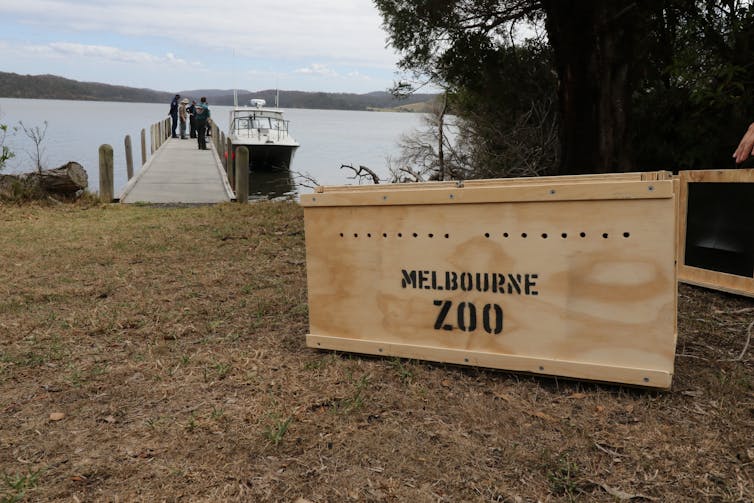
In the ensuing days, the fire moved agonisingly close to the site until a favourable wind change spared it.
But tragedy struck days later when fire tore through eastern bristlebird habitat on the NSW side of Cape Howe. Many of the 250 individuals that lived there are presumed dead.
And despite the best efforts of vets and expert keepers at Melbourne Zoo, six of our captive birds succumbed to a fungal respiratory infection in the weeks after their arrival, which they were all likely carrying when captured.
Return To Cape Howe
Against the odds, bristlebird habitat on the Victorian side of Cape Howe remained unburnt. So in early April, we released a little flock of seven back into the wild.
We’d initially planned to attach tiny transmitters to some released bristlebirds to monitor how they settled back into their home. But COVID-19 restrictions forced us to cancel this intensive fieldwork.
Instead, each bristlebird was fitted with a uniquely coloured leg band. As restrictions ease, our team will return to Cape Howe to see how the colour-banded birds have fared.
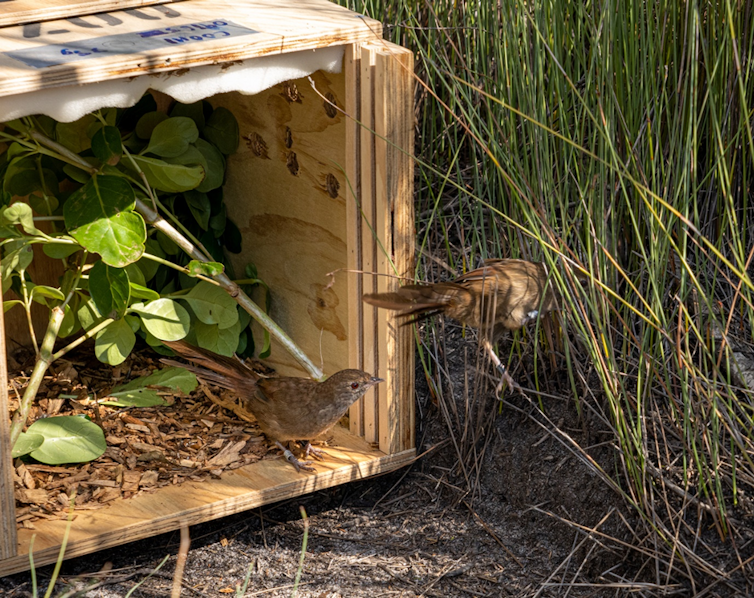
A Model For The Future
The evacuation involved collaboration between government agencies and non-government organisations, with especially important coordination and oversight by Zoos Victoria, the Victorian Department of Environment, Land, Water and Planning, and Parks Victoria.
This team moved mountains of logistical hurdles. A rescue mission that would ordinarily take more than a year to plan was completed in weeks.
Read more: After the bushfires, we helped choose the animals and plants in most need. Here's how we did it
So was it all worth it? We strongly believe the answer is yes. The team did what was needed for the worst-case scenario; ultimately that scenario was avoided by a mere whisker.
But climate change is heightening fire danger and increasing the frequency of extreme weather events. Soberingly, further emergency wildlife evacuations will probably be needed to prevent extinctions in future. Our mission will serve as a model for these interventions.
Rohan Clarke, Director, Monash Drone Discovery Platform, and Senior Lecturer in Ecology, Monash University; Katherine Selwood, Threatened Species Biologist, Wildlife Conservation & Science, Zoos Victoria and Honorary Research Fellow, Biosciences, University of Melbourne, and Rowan Mott, Biologist, Monash University
This article is republished from The Conversation under a Creative Commons license. Read the original article.
Summer bushfires: how are the plant and animal survivors 6 months on? We mapped their recovery
Anthea Batsakis, The Conversation; Nicole Hasham, The Conversation, and Wes Mountain, The ConversationAustralia roared into 2020 as a land on fire. The human and property loss was staggering, but the damage to nature was equally hard to fathom. By the end of the fire season 18.6 million hectares of land was destroyed.
So what’s become of animal and plant survivors in the months since?
Click through below to explore the impact Australia’s summer of fires had on an already drought-ravaged landscape and the work being done to rescue and recover habitats.
Anthea Batsakis, Deputy Editor: Environment + Energy, The Conversation; Nicole Hasham, Section Editor: Energy + Environment, The Conversation, and Wes Mountain, Multimedia Editor, The Conversation
This article is republished from The Conversation under a Creative Commons license. Read the original article.
'Jewel of nature': scientists fight to save a glittering green bee after the summer fires
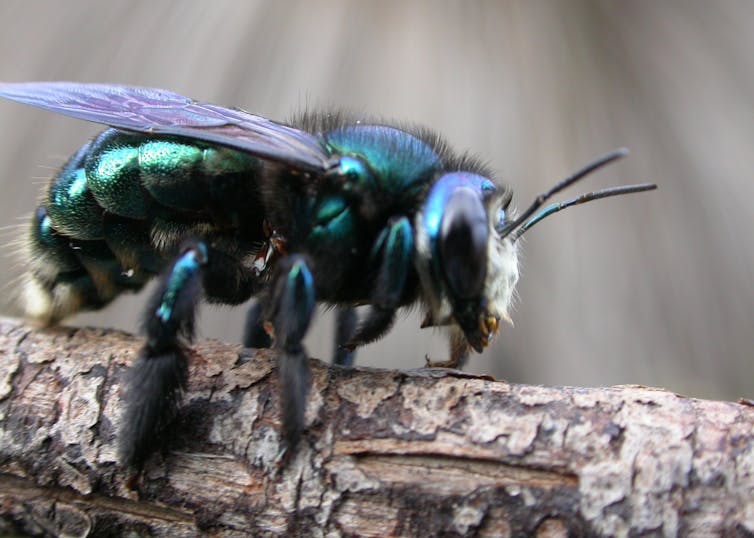
This article is part of Flora, Fauna, Fire, a special project by The Conversation that tracks the recovery of Australia’s native plants and animals after last summer’s bushfire tragedy. Explore the project here and read more articles here.
The green carpenter bee (Xylocopa aerata) is an iconic, beautiful native species described as a “jewel of nature” for its metallic green and gold colouring. Carpenter bees are so named because they excavate their own nests in wood, as opposed to using existing holes.
With a body length of about 2 centimetres, it is among the largest native bees in southern Australia. While not used in honey farming, it is an important pollinator for several species of Australian native plants.
Last summer’s catastrophic bushfires significantly increased the risk of local extinctions of this magnificent species. We have studied the green carpenter bee for decades. For example, after the 2007 fires on Kangaroo Island, we bolstered the remaining population by providing nesting materials.
To see our efforts - and more importantly, most of the habitat these bees rely on - destroyed by the 2020 fire was utterly devastating.
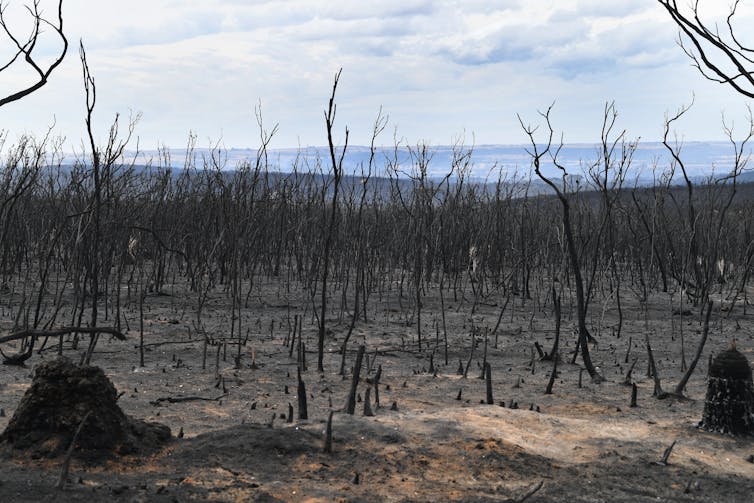
A Crucial Pollinator On The Brink
The green carpenter bee is a buzz-pollinating species. Buzz pollinators are specialist bees that vibrate the pollen out of the flowers of buzz-pollinated plants.
Many native plants, such as guinea flowers, velvet bushes, Senna, fringe, chocolate and flax lilies, rely completely on buzz-pollinating bees for seed production. Introduced honey bees do not pollinate these plants.
Read more: Our field cameras melted in the bushfires. When we opened them, the results were startling
The green carpenter bee went extinct on mainland South Australia in 1906 and in Victoria in 1938. It still occurs on the relatively uncleared western half of Kangaroo Island in South Australia, in conservation areas around Sydney, and in the Great Dividing Range in New South Wales.
Local extinctions were probably due to habitat clearing and large, intense bushfires. The last time the green carpenter bee was seen in Victoria was early December 1938 in the Grampians, which burnt completely during the Black Friday fires of January 1939.
There are several reasons green carpenter bees are vulnerable to fire, including:
- the species uses dead wood for nesting, which burns easily
- if the nest burns before the offspring matures in late summer, the adult female might fly away but won’t live long enough to reproduce again, and
- the bees need floral resources throughout the year.
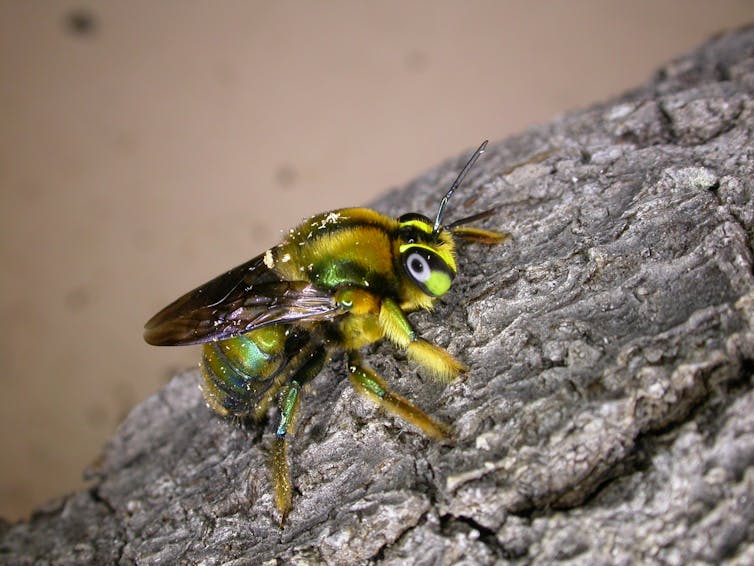
Nowhere To Nest
The bees mainly dig their nests in two types of soft wood: dry flowering stalks of grass trees and, crucially important, large dead Banksia trunks. The availability of both nesting materials is intricately connected with fire.
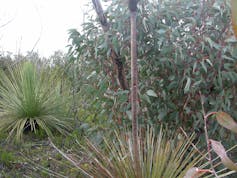
Grass trees flower prolifically after fire, but the dry stalks are only abundant between two and five years after fire. Banksia species don’t survive fire, and need to grow for at least 30 years to become large enough for the bees to use.
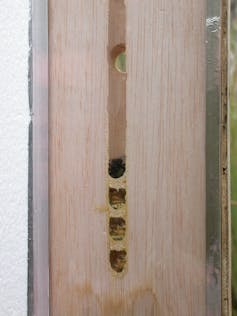
With increasingly frequent and intense fires, there’s not enough time for Banksia trunks to grow big enough, before they’re wiped out by the next fire.
A Helping Hand After The 2007 Fires
In 2007, Flinders Chase National Park on Kangaroo Island burnt almost entirely.
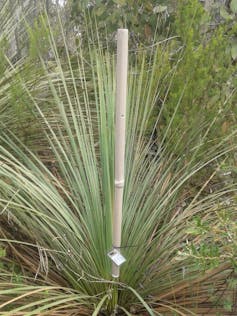
However, in long-unburnt areas adjacent to the park, carpenter bee nests were still present. From there, they colonised the many dry grass tree stalks that resulted from the fire in the park.
In 2012, most flowering stalks had decayed. In an attempt to bolster population size, we successfully developed artificial nesting stalks to tide the bees over until new Banksia, suitable for nesting, would become available.
Since then, each year we’ve placed artificial nesting stalks in fire-affected areas where the bee still occurred. Almost 300 female carpenter bees have successfully used our stalks to raise their offspring.
Then Came The January 2020 Fires
At the time of the 2020 fires on Kangaroo Island, there were more than 150 nests containing mature brood in the stalks we had provided.
We’d placed these in 12 sites in and around Flinders Chase National Park, to spread risk - to no avail, as they all burnt.
We were horrified to see the intensity and speed of the fire that turned our efforts to ash, along with most of the remnant, long (more than 60 years) unburnt Banksia habitat the bees rely on. In New South Wales, much of the species’ natural range was also burnt.
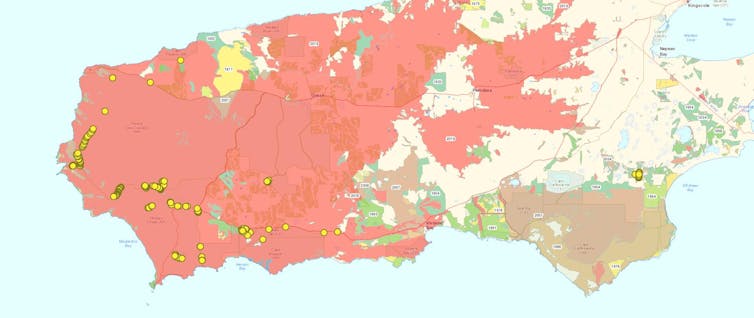
What’s Next For The Green Carpenter Bee?
To fully appreciate the impact, we need to survey the remaining long unburnt areas on Kangaroo Island and in NSW.
Encouragingly, we have already found a few natural nests on Kangaroo Island, but the remaining suitable areas are small and isolated, and densities are likely to be low.
With funds raised through the Australian Entomological Society and the Wheen Bee Foundation, and with help of the Kingscote Men’s Shed, we are making new nesting stalks.
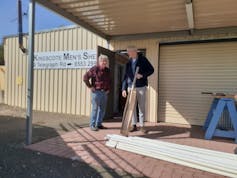
With permission of landholders, we’ll place these new stalks in areas with good floral support, to enhance reproduction and help the bees disperse into conservation areas once suitable.
As we have learnt, success is not guaranteed. Extensive and repeated bush fires, combined with asset protection and fuel reduction burns, are making longtime unburnt habitat increasingly rare. It is this lack of old, continuous, unburnt forest that severely threatens the green carpenter bees’ existence.
The Future Of Fire-Vulnerable Biodiversity
The carpenter bee is not the only species facing this problem. Many Australian plants and animals are not resilient to high frequency fires, no matter their intensity or time of year.
The ecological importance of longtime unburnt forest needs urgent recognition, as increased fire frequency – both of natural and “managed” fires – is likely to drive a suite of species to extinction.
For Kangaroo Island, this could include several small mammals, glossy black cockatoos, and a range of invertebrate species, including the green carpenter bees.
Given the expected increase in fire frequency and intensity associated with global heating, it’s time we recognise fire-vulnerable species as a category that requires urgent habitat protection.
Read more: After last summer's fires, the bell tolls for Australia’s endangered mountain bells
Katja Hogendoorn, University of Adelaide; Remko Leijs, Researcher, Flinders University, and Richard V Glatz, Associate research scientist, University of Adelaide
This article is republished from The Conversation under a Creative Commons license. Read the original article.
Climate Change Will Cause More Extreme Wet And Dry Seasons
July 13, 2020
The world can expect more rainfall as the climate changes, but it can also expect more water to evaporate, complicating efforts to manage reservoirs and irrigate crops in a growing world, according to a Clemson University researcher whose latest work has been published in the journal Nature Communications.
Ashok Mishra, who is the corresponding author on the new article, said that previous studies have focused mostly on how climate change will affect precipitation. But the key contribution of the new study is that it also examined the magnitude and variability of precipitation and evaporation and how much water will be available during the wettest and driest months of the year.
Researchers found that dry seasons will become drier, and wet seasons will become wetter, said Mishra, who is the Dean's Associate Professor in the Glenn Department of Civil Engineering.
Most of the Eastern United States, including all of South Carolina, has high precipitation that it is well distributed throughout the year, researchers found. The region and others like it can expect greater precipitation and evaporation in both wet and dry seasons, according to the study. The amount of water available will vary more widely than it does now, researchers found.
The greatest concern for such regions will be more flooding, Mishra said in an interview.
The regions that will be hardest hit by climate change are the ones that already get slammed with rain during wet seasons and struggle with drought during dry seasons, researchers found. They include much of India and its neighbors to the east, including Bangladesh and Myanmar, along with an inland swath of Brazil, two sections running east-west across Africa, and northern Australia, according to the study.
"The regions which already have more drought and flooding relative to other regions will further see an increase in these events," Mishra said.
As part of the study, researchers divided the world into nine land regions, or regimes. They looked at annual precipitation and how it fluctuates through the seasons for each region from 1971-2000.
Researchers then used that data to predict future water availability during each region's three wettest months and three driest months. They evaluated three scenarios based on multiple global climate models.
The best case scenario for relatively stable water availability during wet and dry seasons is that the global temperature will stabilize at 2 degrees Celsius over pre-industrial levels, according to the study.
But researchers also looked at what would happen if the temperature were to rise to 3.5 degrees Celsius or 5 degrees Celsius over pre-industrial levels by the end of the century.
The higher the temperature, the more variation in water availability, researchers found.
Mishra said that his message to the world is that water is a very important resource.
"The availability of this resource is an issue everybody is facing," he said. "We need to take precautions to optimally use how much water we have. As the climate changes and population increases, we should be preparing for the future by improving the technology to efficiently use water for crops."
Jesus M. de la Garza, chair of the Glenn Department of Civil Engineering, congratulated Mishra on publication of the research.
"Dr. Mishra and his team have taken a novel approach to examining climate change," de la Garza said. "Their work is a step toward developing sustainable solutions ensuring the world has an adequate water supply. With this new article, Dr. Mishra is helping raise Clemson University's global reputation for high-quality research."
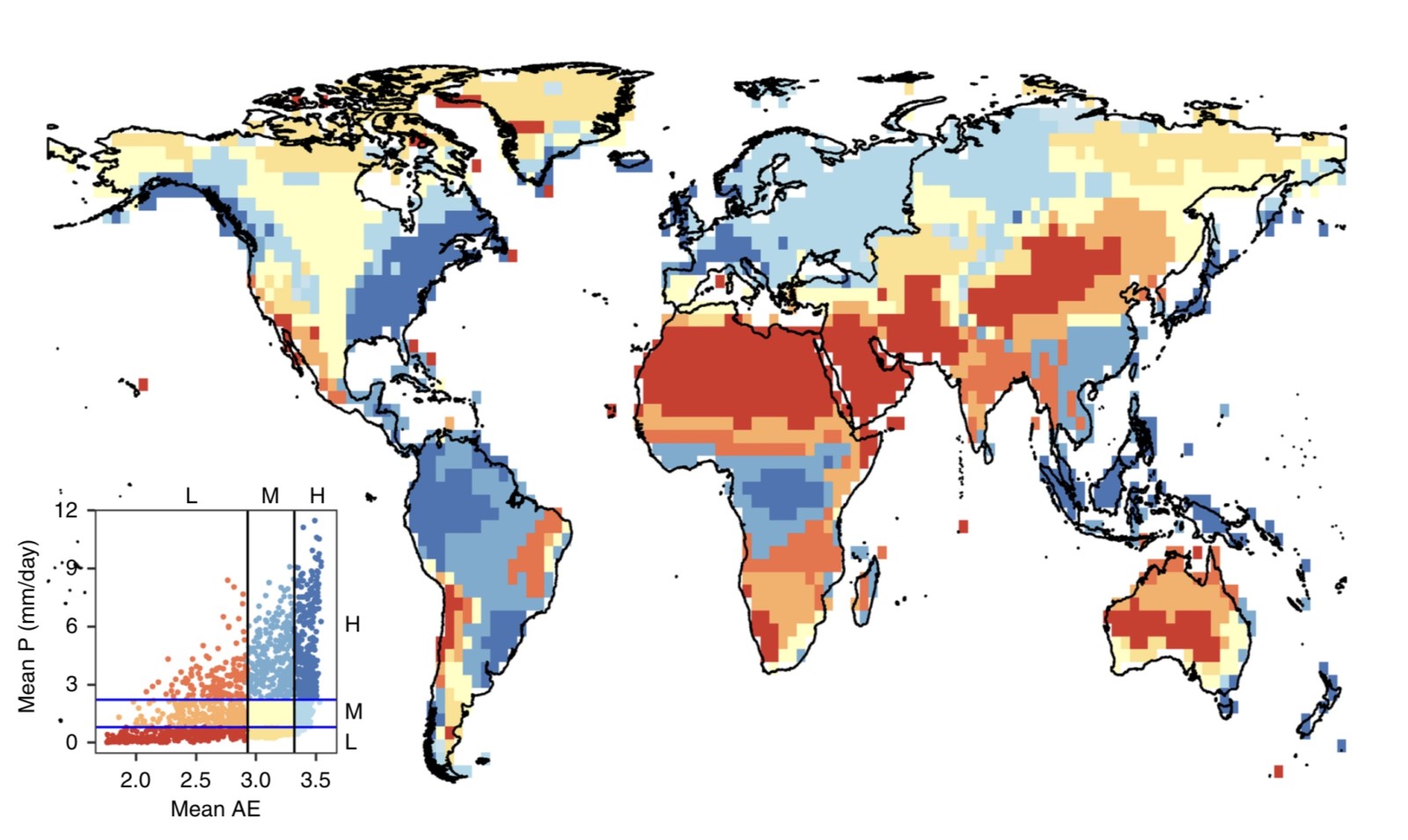
This map shows how various precipitation regions — also called regimes— are distributed throughout the world, according to new research involving Clemson University’s Ashok Mishra. Areas in dark orange are most vulnerable to extremes in wet and dry seasons, a trend expected to become more intense as the climate changes, researchers found.
Goutam Konapala, Ashok K. Mishra, Yoshihide Wada, Michael E. Mann. Climate change will affect global water availability through compounding changes in seasonal precipitation and evaporation. Nature Communications, 2020; 11 (1) DOI: 10.1038/s41467-020-16757-w
Please Help Sydney Wildlife Rescue: Donate Your Cans And Bottles And Nominate SW As Recipient
You can Help Sydney Wildlife help Wildlife. Sydney Wildlife Rescue is now listed as a charity partner on the return and earn machines in these locations:
- Pittwater RSL Mona Vale
- Northern Beaches Indoor Sports Centre NBISC Warriewood
- Woolworths Balgowlah
- Belrose Super centre
- Coles Manly Vale
- Westfield Warringah Mall
- Strathfield Council Carpark
- Paddy's Markets Flemington Homebush West
- Woolworths Homebush West
- Bondi Campbell pde behind Beach Pavilion
- Westfield Bondi Junction car park level 2 eastern end Woolworths side under ramp
- UNSW Kensington
- Enviro Pak McEvoy street Alexandria.
Every bottle, can, or eligible container that is returned could be 10c donated to Sydney Wildlife.
Every item returned will make a difference by removing these items from landfill and raising funds for our 100% volunteer wildlife carers. All funds raised go to support wildlife.
It is easy to DONATE, just feed the items into the machine select DONATE and choose Sydney Wildlife Rescue. The SW initiative runs until August 23rd.
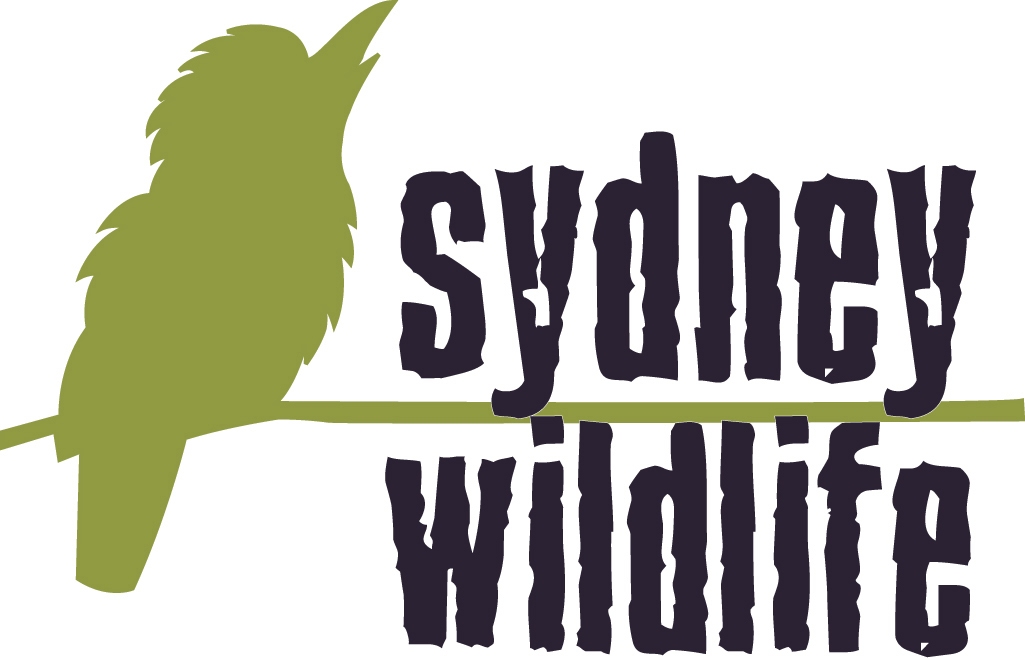
Rat Poisons Are Killing Our Wildlife: Alternatives
BirdLife Australia is currently running a campaign highlighting the devastation being caused by poison to our wildlife. Rodentcides are an acknowledged but under-researched source of threat to many Aussie birds. If you missed BirdLife's rodenticide talk but would like to know more, share data and comment on the use of rodenticides in Australia please visit: https://www.actforbirds.org/ratpoison
Owls, kites and other birds of prey are dying from eating rats and mice that have ingested Second Generation rodent poisons. These household products – including Talon, Fast Action RatSak and The Big Cheese Fast Action brand rat and mice bait – have been banned from general public sale in the US, Canada and EU, but are available from supermarkets throughout Australia.
Australia is reviewing the use of these dangerous chemicals right now and you can make a submission to help get them off supermarket shelves and make sure only licenced operators can use them.
There are alternatives for household rodent control – find out more about the impacts of rat poison on our birds of prey and what you can do at the link above and by reading the information below.
Let’s get rat poison out of bird food chains.
The Australian Pesticides and Veterinary Medicines Authority (APVMA) – is currently asking Australians for their views on how rodent poisons are regulated.
Have your say by making a submission here.
Powerful Owl at Clareville - photo by Paul Wheeler
Pesticides that are designed to control pests such as mice and rats cane also kill our wildlife through either primary or secondary poisoning. Insecticides include pesticides (substances used to kill insects), rodenticides (substances used to kill rodents, such as rat poison), molluscicides (substances used to kill molluscs, such as snail baits), and herbicides (substances used to kill weeds).
Primary poisoning occurs when an animal ingests a pesticide directly – for example, a brushtail possum or antechinus eating rat bait. Secondary poisoning occurs when an animal eats another animal that has itself ingested a pesticide – for example, a greater sooty owl eating a rate that has been poisoned or an antechinus that had eaten rat bait.
Rodenticides are the most common and harmful pesticides to Australian wildlife. Though no comprehensive monitoring of non-target exposure of rodenticides has been conducted, numerous studies have documented the harm rodenticides do to native animals. In 2018, an Australian study found that anticoagulant rodenticides in particular are implicated in non-target wildlife poisoning in Australia, and warned Australia’s usage patterns and lax regulations “may increase the risk of non-target poisoning”.
Most rodenticides work by disrupting the normal coagulation (blood clotting) process, and are classified as either “first generation” / “multiple dose” or “second generation” / “single dose”, depending on how many doses are required for the poison to be lethal.
These anticoagulant rodenticides cause victims of anticoagulant rodenticides to suffer greatly before dying, as they work by inhibiting Vitamin K in the body, therefore disrupting the normal coagulation process. This results in poisoned animals suffering from uncontrolled bleeding or haemorrhaging, either spontaneously or from cuts or scratches. In the case of internally haemorrhaging, which is difficult to spot, the only sign of poisoning is that the animal is weak, or (occasionally) bleeding from the nose or mouth. Affected wildlife are also more likely to crash into structures and vehicles, and be killed by predators.
An animal has to eat a first generation rodenticide (e.g. warfarin, pindone, chlorophaninone, diphacinone) more than once in order to obtain a lethal dose. For this reason, second generation rodenticides (e.g. difenacoum, brodifacoum, bromadiolone and difethialone) are the most commonly used rodenticides. Second generation rodenticides only require a single dose to be consumed in order to be lethal, yet kill the animal slowly, meaning the animal keeps coming back. This results in the animal consuming many times more poison than a single lethal dose over the multiple days it takes them to die, during which time they are easy but lethal prey to predators. This is why second generation poisons tend to be much more acutely toxic to non-target wildlife, as they are much more likely to bioaccumulate and biomagnify, and clear very slowly from the body.
Species most at risk from poisons
Small Mammals
Small mammals including possums and bandicoots often consume poisons such as snail bait, or rat bait that has been laid out to attract and kill rats, mice, and rabbits. Poisons such as pindone are often added to oats or carrots, and lead to a slow, painful death of internal bleeding. Australian possums often consume rat bait such as warfarin, which causes extensive internal bleeding, usually resulting in death.
There is a very poor chance of survival. Possums are also known to consume slug bait, which results in a prolonged painful death mainly from neurological effects. There is no treatment.
Small mammals can also be poisoned by insecticides. Possums, for example, can ingest these poisons when consuming fruit from a tree that has been sprayed with insecticide. Rescued by a WIRES carer, the brushtail possum joey pictured below was suffering from suspected insecticide poisoning. Though coughing up blood, luckily the joey did not ingest a lethal dose as he survived in care and was later released.
Large Mammals
Despite their size, large mammals including wallabies, kangaroos and wombats can also fall victim to pesticide poisoning. Wallabies and kangaroos have been known to suffer from rodenticide poisoning, while poisons often ingested by wombats include rat bait from farm sheds, and sodium fluroacetate (1080) laid out to kill pests such as cats and foxes.
Australian mammals are also impacted by the use of insecticides. DDT, although a banned substance, has been reported as killing marsupials.
Birds
Birds have a high metabolic rate and therefore succumb quickly to poisons. Australian birds of prey – owls (such as the southern boobook) and diurnal raptors (such as kestrels) – can be killed by internal bleeding when they eat rodents that have ingested rat bait. A 2018 Western Australian study determined that 73% of southern boobook owls found dead or were found to have anticoagulant rodenticides in their systems, and that raptors with larger home ranges and more mammal-based diets may be at a greater risk of anticoagulant rodenticide exposure.
Insectivorous birds will often eat insects sprayed with insecticides, and a few different species of birds may be affected at the same time. Unfortunately little can be done and death most often results.
Organophosphates are the most widely used insecticide in Australia. Birds are very susceptible to organophosphates, which are nerve toxins that damage the nervous system, with poisoning occurring through the skin, inhalation, and ingestion. Organophosphates can cause secondary poisoning in wild birds which ingest sprayed insects. Often various species of insectivorous birds are affected at the same time as they come down to eat the dying insects. After a bird is poisoned, death usually occurs rapidly. Raptors have also been deliberately or inadvertently poisoned when organophosphates have been applied to a carcass to poison crows.
Organochlorine pesticides (OCPs) are persistent, bio-accumulative pesticides that include DDT, dieldrin, heptachlor and chlordane. OPC’s have been used extensively in the agriculture industry since the 1940s. Some of the more common product names include Hortico Dieldrin Dust, Shell Dieldrex and Yates Garden Dust. Although no OCP’s are currently registered for use in the home environment in Australia, many of these products still remain in use on farms, in business premises and households. OCP poisons remain highly toxic in the environment for many years impacting on humans, animals, birds and especially aquatic life. They can have serious short-term and long-term impacts at low concentrations. In addition, non-lethal effects such as immune system and reproductive damage of some of these pesticides may also be significant. Birds are particularly sensitive to these pesticides, and there have even been occasions where the deliberate poisoning of birds has occurred. Tawny frogmouths are most often poisoned with OCP’s. The poisons are stored in fat deposits and gradually increase over time. At times of food scarcity, or during any stressful period, such as breeding season or any changes to their environment, the fat stores are metabolised, and with it, the poison load in their blood streams reaches acute levels, causing death.
Although herbicides, or weed killers, are designed to kill plants, some are toxic to birds. Common herbicide glyphosate (Roundup) will cause severe eye irritation in birds if they come into contact with the spray. Herbicides also have the impact of removing food plants that birds, or their insect food supply, rely on. Birds can also readily fall victim to snail baits, either via primary or secondary poisoning.
Reptiles and Amphibians
As vertebrate species, reptiles and amphibians are also at risk of pesticides. Though less is known about the effects of pesticides on reptiles and amphibians, these animals have been known to fall victim to pesticide poisoning. Blue-tongue lizards, for example, often consume rat bait and die of internal bleeding. A 2018 Australian study also found that reptiles may be important vectors (transporters) of rodenticides in Australia.
How to keep pests away and keep wildlife safe
Remember, pesticides are formulated to be tasty and alluring to the target species, but other species find them enticing, too. It is safest for wildlife, pets and people for us to not use any pesticides, and prevent or deter the presence of pests practically, rather than attempt to eliminate them chemically.
Tips to prevent and deter wildlife deaths from poisoning:
- Deter rats and mice around your property by simply cleaning up; removing rubbish, keeping animal feed well contained and indoors, picking up fallen fruits and vegetation, and using chicken feeders removes potential food sources.
- Seal up holes and in your walls and roof to reduce the amount of rodent-friendly habitat in your house.
- Replace palms with native trees; palm trees are a favourite hideout for black rats, while native trees provide ideal habitat for native predators like owls and hawks which help to control rodent populations.
- Set traps with care in a safe, covered spot, away from the reach of children, pets and wildlife. Two of the most effective yet safe baits are peanut butter and pumpkin seeds.
- To control slugs, terracotta or ceramic plant pots can be placed upside down in the garden or aviary. Slugs and snails will seek the dark, damp area this creates, and can be collected daily. They can then be drowned in a jar of soapy water. You can also sink a jar or dish into the soil and fill it with beer. The slugs are attracted to the yeast in the beer, fall in and then drown.
If turning to pesticides as a last resort:
- Use only animal-safe slug baits.
- Place tamper-proof bait stations out of reach of wildlife.
- Avoid using loose whether pellets or poison grain, present the highest risk, the latter being particularly attractive to seed-eating birds and to many small mammal species.
- Read the label and use as instructed.
- Avoid products containing second generation products difenacoum, brodifacoum, bromadiolone and difethialone, which are long-lasting and much more likely to unintentionally poison wildlife via secondary poisoning.
- Cover individual fruits when spraying fruit trees with insecticides.
Poisons kill dogs too
Because of their poisonous nature, pesticides pose a risk to animals and people alike, including pets and children. Roaming pets like cats and dogs are most at risk of being poisoned, with one 2016 study at the Norwegian University of Life Sciences finding that one in five dogs had rat poison in its body, and a 2011 study by the Humane Society in the United States finding that 74% of their pet poisoning cases are due to second-generation anticoagulants such as rat baits.
It is best to avoid the use of all pesticides, or otherwise use them sparingly, carefully and only after researching each poison and its correct usage. Always supervise pets and children, keep poisons locked out of their reach, and be vigilant in public spaces where pesticides may have accumulated, e.g. poisons can accumulate in streams or puddles where herbicides have recently been sprayed.
If you suspect your pet has been poisoned, seek veterinary help immediately.
If you suspect your child or another adult has been poisoned, do not induce vomiting and call the NSW Poisons Information Centre on 13 11 26 for 24/7 medical advice, Australia-wide.
References
Lohr, M. T. & Davis, R. A. 2018, Anticoagulant rodenticide use, non-target impacts and regulation: A case study from Australia, Science of The Total Environment, vol. 634, pp. 1372-1384.
Lohr, M. T. 2018, Anticoagulant rodenticide exposure in an Australian predatory bird increases with proximity to developed habitat, Science of The Total Environment, Volume 643, pp.134-144.
Lohr, M. T. 2018, Anticoagulant Rodenticides: Implications for Wildlife Rehabilitation, conference paper, Australian Wildlife Rehabiliation Conference, awrc.org.au
Olerud, S., Pedersen, J. & Kull, E. P. 2009, Prevalence of superwarfarins in dogs – a survey of background levels in liver samples of autopsied dogs. Norwegian University of Life Sciences, Faculty of Veterinary Medicine and Life Sciences, Department of Sports and Family Animal Medicine, Section for Small Animal Diseases.
Healthy Wildlife, Healthy Lives, 2017, Rodenticides and Wildlife, healthywildlife.com.au
Society for the Preservation of Raptors Inc. 2019, Raptor Fact Sheet: Eliminate Rats and Mice, Not Wildlife!, raptor.org.au/factsheetpests.pdf
W.I.R.E.S. Poisons and baits don't just kill rats.
.jpg?timestamp=1590728675788)
Barking Owl (Ninox connivens connivens)- photo by Julie Edgley - this nocturnal animal will eat mice and so become a victim of poisons through them
Echidna Season
Echidna season has begun. As cooler days approach, our beautiful echidnas are more active during the days as they come out to forage for food and find a mate. This sadly results in a HIGH number of vehicle hits.
What to do if you find an Echidna on the road?
- Safely remove the Echidna off the road (providing its safe to do so).
- Call Sydney Wildlife or WIRES
- Search the surrounding area for a puggle (baby echidna). The impact from a vehicle incident can cause a puggle to roll long distances from mum, so please search for these babies, they can look like a pinky-grey clump of clay
What to do if you find an echidna in your yard?
- Leave the Echidna alone, remove the threat (usually a family pet) and let the Echidna move away in it's own time. It will move along when it doesn't feel threatened.
If you find an injured echidna or one in an undesirable location, please call Sydney Wildlife on 9413 4300 for advice.
www.sydneywildlife.org.au
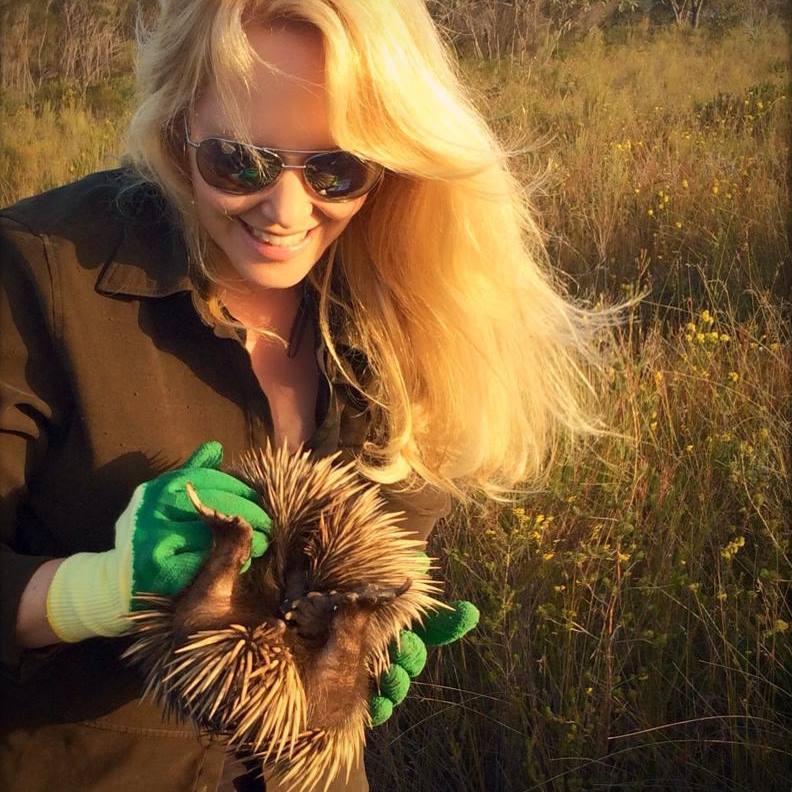
Lynleigh Greig, Sydney Wildlife, with a rescued echidna being returned to its home
 New Shorebird Identification Booklet
New Shorebird Identification Booklet
The Migratory Shorebird Program has just released the third edition of its hugely popular Shorebird Identification Booklet. The team has thoroughly revised and updated this pocket-sized companion for all shorebird counters and interested birders, with lots of useful information on our most common shorebirds, key identification features, sighting distribution maps and short articles on some of BirdLife’s shorebird activities.
The booklet can be downloaded here in PDF file format: http://www.birdlife.org.au/documents/Shorebird_ID_Booklet_V3.pdf
Paper copies can be ordered as well, see http://www.birdlife.org.au/projects/shorebirds-2020/counter-resources for details.
Download BirdLife Australia's children’s education kit to help them learn more about our wading birdlife
Shorebirds are a group of wading birds that can be found feeding on swamps, tidal mudflats, estuaries, beaches and open country. For many people, shorebirds are just those brown birds feeding a long way out on the mud but they are actually a remarkably diverse collection of birds including stilts, sandpipers, snipe, curlews, godwits, plovers and oystercatchers. Each species is superbly adapted to suit its preferred habitat. The Red-necked Stint is as small as a sparrow, with relatively short legs and bill that it pecks food from the surface of the mud with, whereas the Eastern Curlew is over two feet long with a exceptionally long legs and a massively curved beak that it thrusts deep down into the mud to pull out crabs, worms and other creatures hidden below the surface.
Some shorebirds are fairly drab in plumage, especially when they are visiting Australia in their non-breeding season, but when they migrate to their Arctic nesting grounds, they develop a vibrant flush of bright colours to attract a mate. We have 37 types of shorebirds that annually migrate to Australia on some of the most lengthy and arduous journeys in the animal kingdom, but there are also 18 shorebirds that call Australia home all year round.
What all our shorebirds have in common—be they large or small, seasoned traveller or homebody, brightly coloured or in muted tones—is that each species needs adequate safe areas where they can successfully feed and breed.
The National Shorebird Monitoring Program is managed and supported by BirdLife Australia.
This project is supported by Glenelg Hopkins Catchment Management Authority and Hunter Local Land Services through funding from the Australian Government’s National Landcare Program. Funding from Helen Macpherson Smith Trust and Port Phillip Bay Fund is acknowledged.
The National Shorebird Monitoring Program is made possible with the help of over 1,600 volunteers working in coastal and inland habitats all over Australia.
The National Shorebird Monitoring program (started as the Shorebirds 2020 project initiated to re-invigorate monitoring around Australia) is raising awareness of how incredible shorebirds are, and actively engaging the community to participate in gathering information needed to conserve shorebirds.
In the short term, the destruction of tidal ecosystems will need to be stopped, and our program is designed to strengthen the case for protecting these important habitats.
In the long term, there will be a need to mitigate against the likely effects of climate change on a species that travels across the entire range of latitudes where impacts are likely.
The identification and protection of critical areas for shorebirds will need to continue in order to guard against the potential threats associated with habitats in close proximity to nearly half the human population.
Here in Australia, the place where these birds grow up and spend most of their lives, continued monitoring is necessary to inform the best management practice to maintain shorebird populations.
BirdLife Australia believe that we can help secure a brighter future for these remarkable birds by educating stakeholders, gathering information on how and why shorebird populations are changing, and working to grow the community of people who care about shorebirds.
To find out more visit: http://www.birdlife.org.au/projects/shorebirds-2020/shorebirds-2020-program
Bushcare In Pittwater
Where we work Which day What time
Avalon
Angophora Reserve 3rd Sunday 8:30 - 11:30am
Avalon Dunes 1st Sunday 8:30 - 11:30am
Avalon Golf Course 2nd Wednesday 3 - 5:30pm
Careel Creek 4th Saturday 8:30 - 11:30am
Toongari Reserve 3rd Saturday 9 - 12noon (8 - 11am in summer)
Bangalley Headland 2nd Sunday 9 to 12noon
Bayview
Winnererremy Bay 4th Sunday 9 to 12noon
Bilgola
North Bilgola Beach 3rd Monday 9 - 12noon
Algona Reserve 1st Saturday 9 - 12noon
Plateau Park 1st Friday 8:30 - 11:30am
Church Point
Browns Bay Reserve 1st Tuesday 9 - 12noon
McCarrs Creek Reserve Contact Bushcare Officer To be confirmed
Clareville
Old Wharf Reserve 3rd Saturday 8 - 11am
Elanora
Kundibah Reserve 4th Sunday 8:30 - 11:30am
 Mona Vale
Mona Vale Mona Vale Beach Basin 1st Saturday 8 - 11am
Mona Vale Dunes 2nd Saturday +3rd Thursday 8:30 - 11:30am
Newport
Bungan Beach 4th Sunday 9 - 12noon
Crescent Reserve 3rd Sunday 9 - 12noon
North Newport Beach 4th Saturday 8:30 - 11:30am
Porter Reserve 2nd Saturday 8 - 11am
North Narrabeen
Irrawong Reserve 2nd Saturday 2 - 5pm
Palm Beach
North Palm Beach Dunes 3rd Saturday 9 - 12noon
Scotland Island
Catherine Park 2nd Sunday 10 - 12:30pm
Elizabeth Park 1st Saturday 9 - 12noon
Pathilda Reserve 3rd Saturday 9 - 12noon
Warriewood
Warriewood Wetlands 1st Sunday 8:30 - 11:30am
Whale Beach
Norma Park 1st Friday 9 - 12noon
Western Foreshores
Coopers Point, Elvina Bay 2nd Sunday 10 - 1pm
Rocky Point, Elvina Bay 1st Monday 9 - 12noon
Gardens And Environment Groups And Organisations In Pittwater
Pittwater Reserves
Aussie Bread Tags Collection Points

Researchers Solve A 50-Year-Old Enzyme Mystery
Where Did The Asian Longhorned Ticks In The US Come From?
Scientists Trace The Origin Of Our Teeth From The Most Primitive Jawed Fish
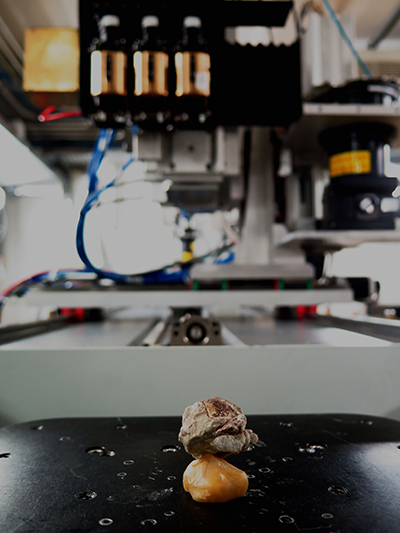
Socio-Economic And Environmental Impacts Of COVID-19 Quantified
- Consumption: US$3.8 trillion (4.2 percent ~ GDP of Germany)
- Jobs: 147m (4.2 percent of the global workforce)
- Income from wages and salaries: $2.1 trillion (6 percent)
- Most directly hit: US, China (mainland), air transport and related tourism
- Greenhouse gas emissions: 2.5Gt (4.6 percent) -- larger than any drop in human history*
- Other atmospheric emissions -- PM2.5: Dangerously fine particulate matter emissions fall 0.6 Mt (3.8 percent); SO2 & NOx: Sulfur dioxide emissions from burning fossil fuels -- which has been linked to asthma and chest tightness -- and emissions from nitrogen oxide -- from fuel combustion, for example, driving cars -- fall 5.1 Mt (2.9 percent).
- Manfred Lenzen, Mengyu Li, Arunima Malik, Francesco Pomponi, Ya-Yen Sun, Thomas Wiedmann, Futu Faturay, Jacob Fry, Blanca Gallego, Arne Geschke, Jorge Gómez-Paredes, Keiichiro Kanemoto, Steven Kenway, Keisuke Nansai, Mikhail Prokopenko, Takako Wakiyama, Yafei Wang, Moslem Yousefzadeh. Global socio-economic losses and environmental gains from the Coronavirus pandemic. PLOS ONE, 2020; 15 (7): e0235654 DOI: 10.1371/journal.pone.0235654
- Thomas Wiedmann, Manfred Lenzen, Lorenz T. Keyßer, Julia K. Steinberger. Scientists’ warning on affluence. Nature Communications, 2020; 11 (1) DOI: 10.1038/s41467-020-16941-y
Whole Body Scans For Trauma Patients Saves Time Spent In Emergency Departments
The Effects Of Smartphone Use On Parenting
Disclaimer: These articles are not intended to provide medical advice, diagnosis or treatment. Views expressed here do not necessarily reflect those of Pittwater Online News or its staff.
